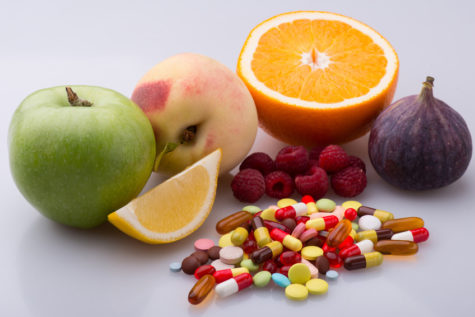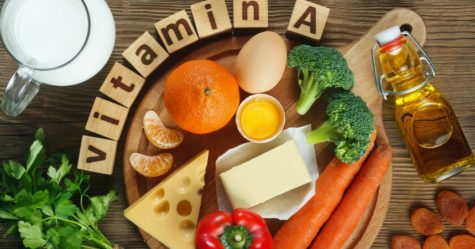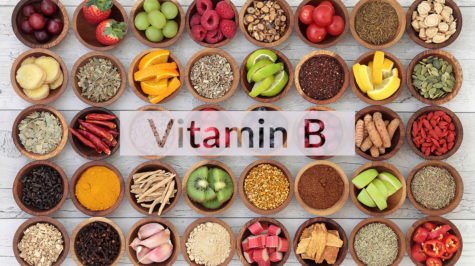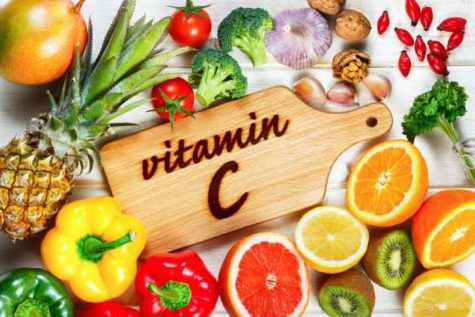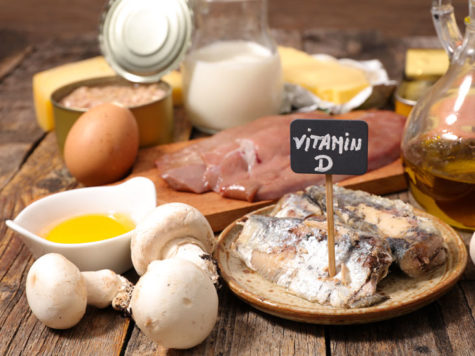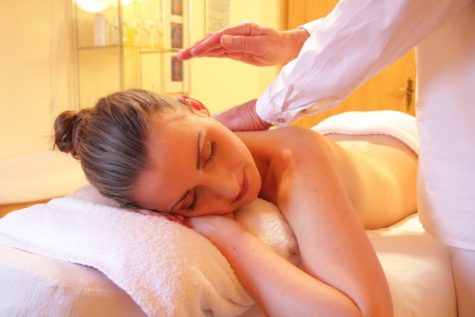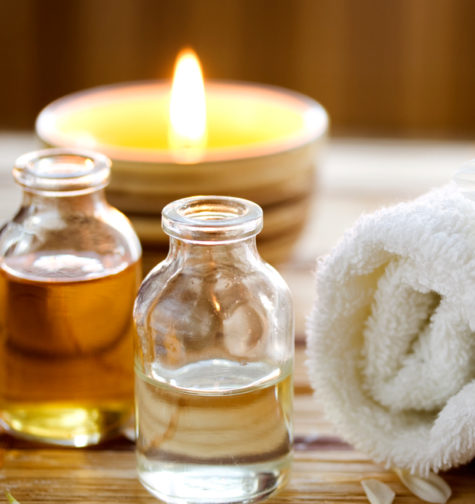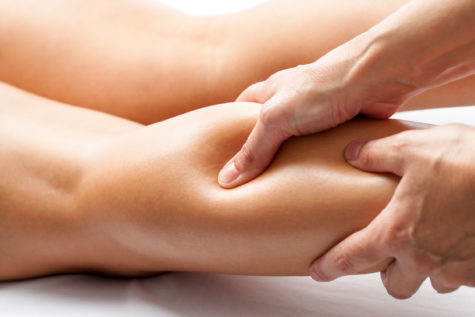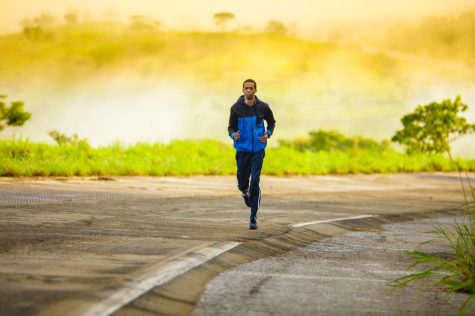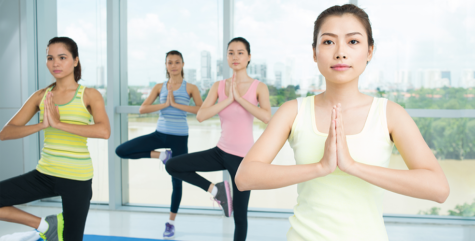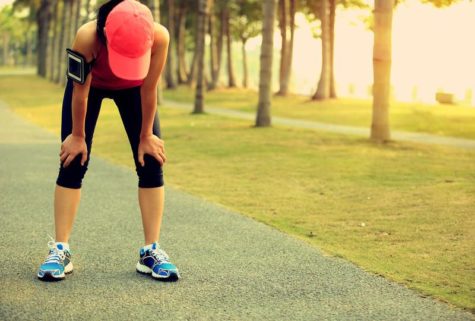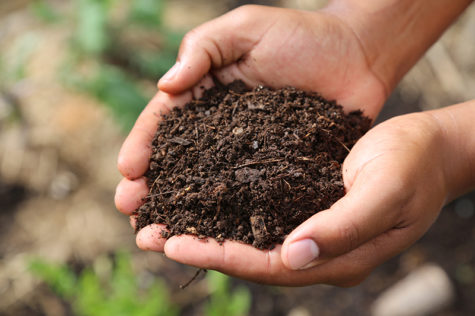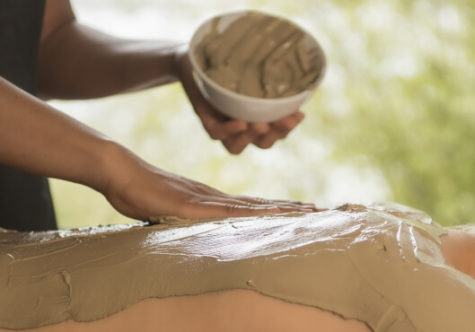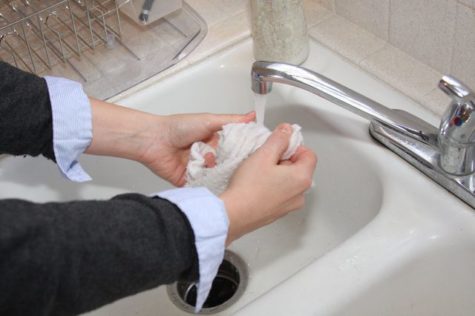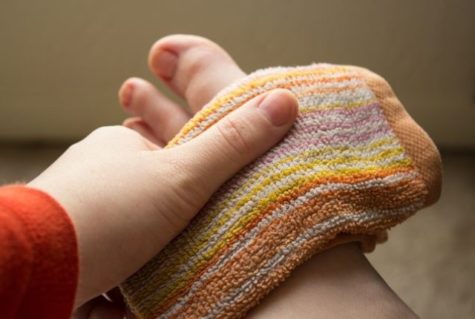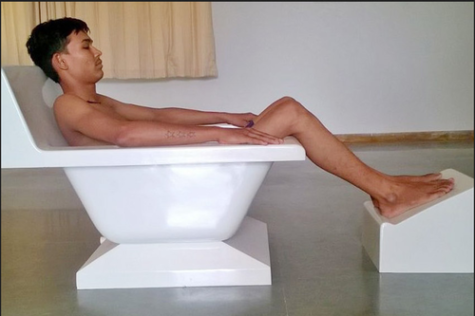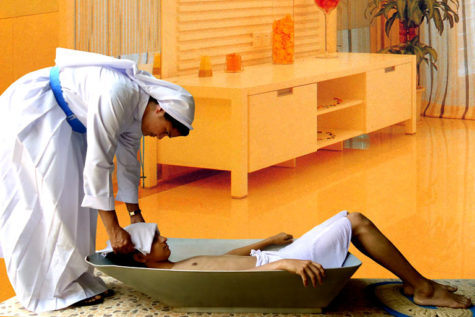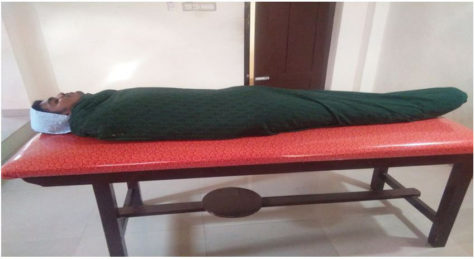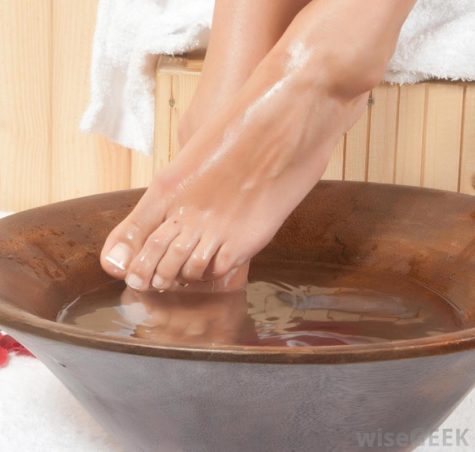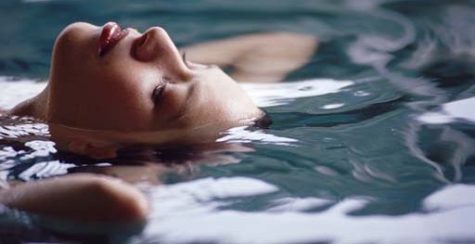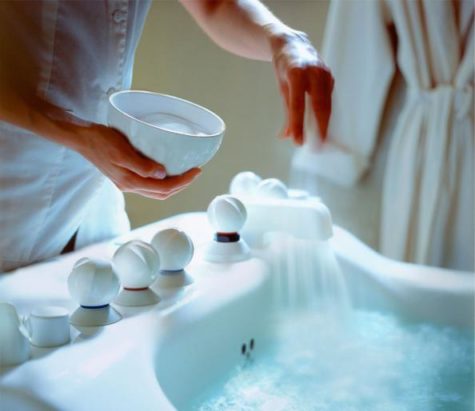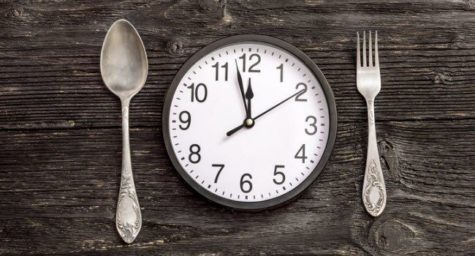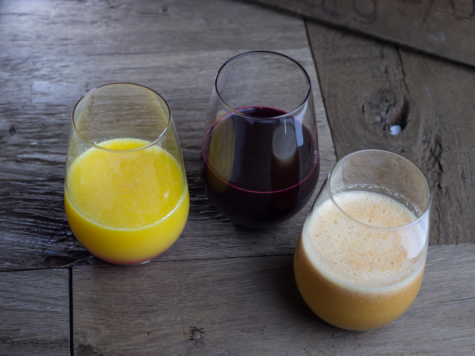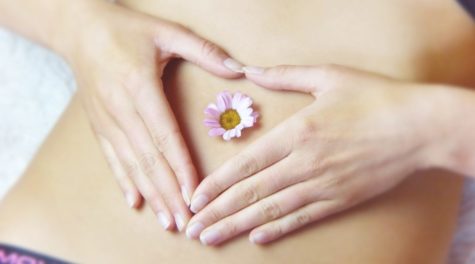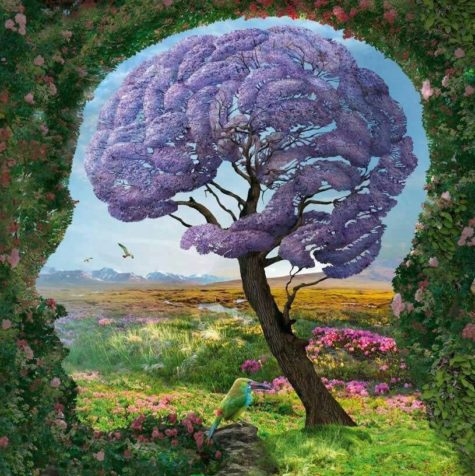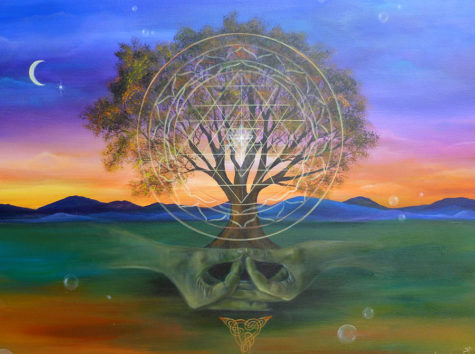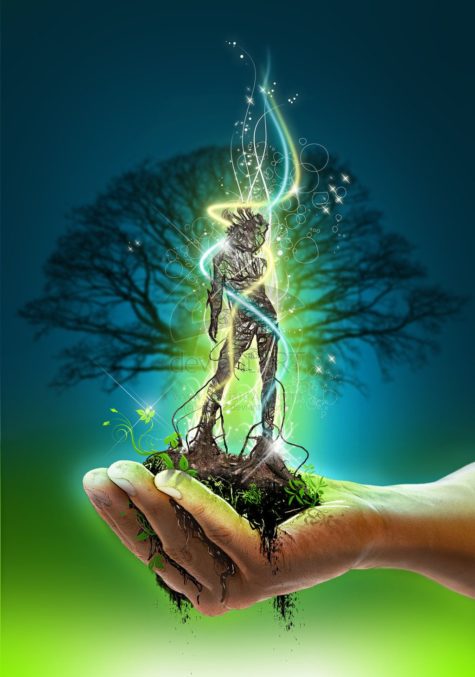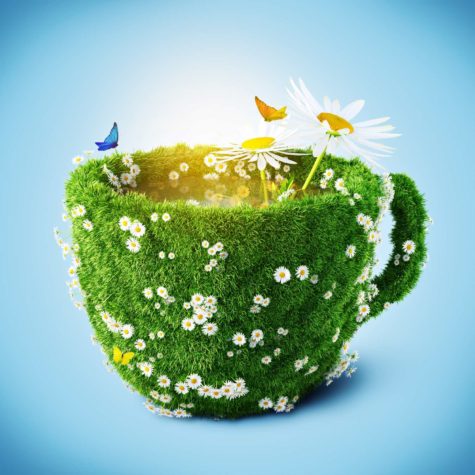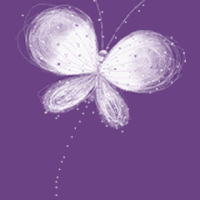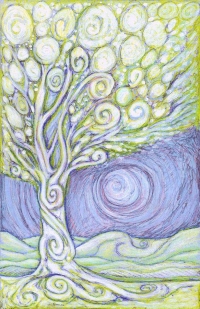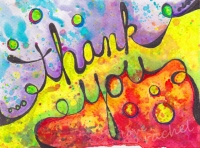Naturopathy
Raw Juice Therapy
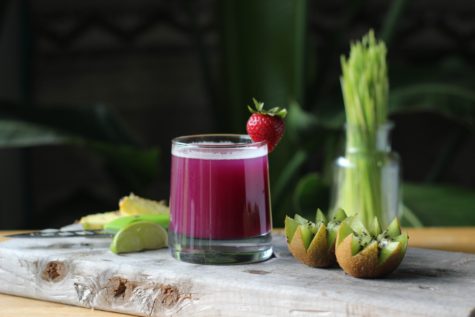
Raw juice therapy is a method of treatment of disease through an exclusive diet of juices of fruits and vegetables. It is also known as juice fasting. It is the most effective way to restore health and rejuvenate the body.
During raw juice therapy, the eliminative and cleansing capacity of the organs of elimination, namely lungs, liver, kidneys and the skin, is greatly increased and masses of accumulated metabolic waste and toxins are quickly eliminated. It affords a physiological rest to the digestive and assimilative organs.
After the juice fasting or raw juice therapy, the digestion of food and the utilization of nutrients is vastly improved. An exclusive diet of raw juices of fruits and vegetables results in much faster recovery from diseases and more effective cleansing and regeneration of the tissues than the fasting on pure water.
Dr. Ragnar Berg, a world-renowned authority on nutrition and biochemistry observes:
“During fasting the body burns up and excretes huge amounts of accumulated wastes. We can help this cleansing process by drinking alkaline juices instead of water while fasting.
I have supervised many fasts and made extensive examinations and tests of fasting patients, and I am convinced that drinking alkali-forming fruit and vegetable juices, instead of water, during fasting will increase the healing effect of fasting. Elimination of uric acid and other inorganic acids will be accelerated. And sugars in juices will strengthen the heart.
Juice fasting is, therefore, the best form of fasting. ”
As juices are extracted from plants and fruits, they process definite medicinal properties. Specific juices are beneficial in specific conditions. Besides specific medicinal virtues, raw fruit and vegetable juices have an extraordinary revitalizing and rejuvenative effect on all the organs, glands and functions of the body.
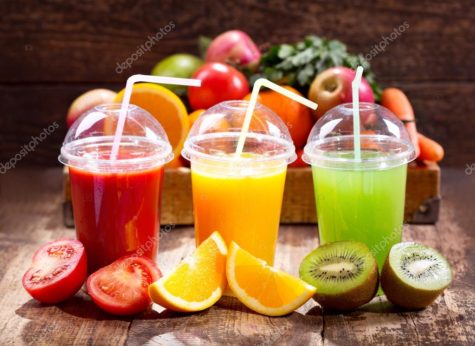
Favorable Effects
The favorable effect of raw juices in the treatment of disease is attributed to the following facts : Raw juices of fruits and vegetables are extremely rich in vitamins, minerals, trace elements, enzymes and natural sugars. They exercise beneficial effect in normalizing all the body functions. They supply needed elements for the body’s own healing activity and cell regeneration, thereby speeding the recovery.
- The juices extracted from raw fruits and vegetables require no digestion and almost all their vital nutrients are assimilated directly in the bloodstream.
- Raw juices are extremely rich in alkaline elements. This is highly beneficial in normalizing acid-alkaline balance in the blood and tissues as there is over-acidity in most conditions of ill-health.
- Generous amounts of easily assimilable organic minerals in raw juices especially calcium, potassium and silicon help in restoring biochemical and mineral balance in the tissues and cells, thereby preventing premature ageing of cells and disease.
- Raw juices contain certain natural medicines, vegetal hormones and antibiotics. For instance, string beans are said to contain insulin-like substance. Certain hormones needed by the pancreas to produce insulin are present in cucumber and onion juices. Fresh juices of garlic , onions, radish and tomatoes contain antibiotic substances.

Precautions
Certain precautions are, however, necessary in adopting an exclusive diet of raw juices. Firstly, all juices should be made fresh immediately before drinking. Canned and frozen juices should not be used. It will be advisable that one should have one’s own juicer for extracting fresh juices.
Secondly, only fresh ripe fruits and vegetables, preferably organically grown, should be used for extraction of juices.
Thirdly, only as much juice as needed for immediate consumption should be extracted. Raw juices oxidize rapidly and lose their medicinal value in storage, even under refrigeration.
Fourthly, the quality of the juices has a distinct bearing on the results obtained. In case of incomplete extraction of juices, their effective power is proportionately reduced due to the absence of the vitamins and enzymes which are left behind in fiber and the pulp.
Finally, if juices are too sweat they should be diluted in water on 50 : 50 basis or mixed with other less sweet juices. This is especially important in some specific conditions such as diabetes, hypoglycemia, arthritis and high blood pressure.
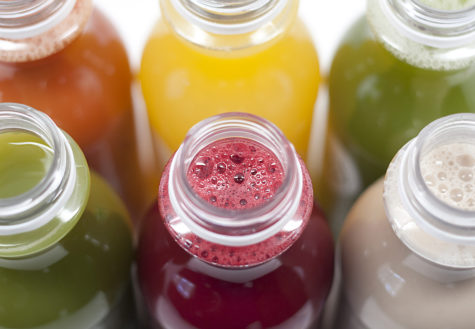
The Six Main Types of Juices
Fruit and vegetable juices may be divided into six main types. These are :
- Juices from sweet fruits such as prunes and grapes
- Juices from sub-acid fruits like apple, plum, pear, peach, apricot and cherry
- Juices from acid fruits like orange, lemon, grapefruit, strawberry and pineapple
- Juices from vegetable fruits, namely, tomato and cucumber
- Juices from green leafy vegetables like cabbage, celery, lettuce, spinach, parsley and watercress
- Juices from root vegetables like beetroot, carrot, onion, potato and radish. Generally speaking, fruit juices stir up toxins and acids in the body, thereby stimulating the eliminative processes.
Vegetable juices, on the other hand, soothe the jaded nerves and work in a much milder manner. They carry away toxic matter in a gentle way. Owing to their differing actions fruit and vegetable juices should not be used at the same time or mixed together. It is desirable to use juices individually. In any case not more than three juices should be used in any one mixture.
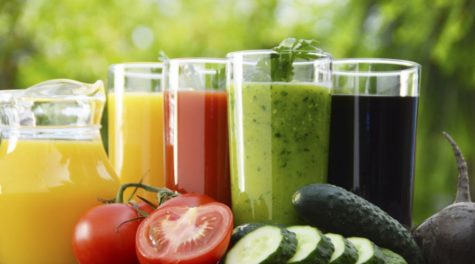
Rules For Mixing Juices
The following broad rules apply when using mixtures of juices. Juices from sweet fruits may be combined with juices of sub-acid fruits, but not with those of acid fruits, vegetable fruits or vegetables.
- Juices from sub-acid fruits may be combined with juices of sweet fruits, or acid fruits, but not with other juices.
- Juices from acid fruits may be combined with those of sub-acid fruits or vegetable fruits, but not with other juices.
- Juices from vegetable fruits may be combined with those of acid fruits or of green leafy vegetables, but not with other juices.
- Juices from green leafy vegetables may be combined with those of vegetable fruits or of the root vegetable, but not with other juices.
- Juices from root vegetables may be combined with those of green leafy vegetables, but not with other juices. A proper selection of juices in treating a particular ailment is very essential.
Thus, for instance, juices of carrot, cucumber, cabbage and other vegetables are very valuable in asthma, arthritis and skin disease, but juices of orange and mosambi aggravate their symptoms by increasing the amount of mucus.
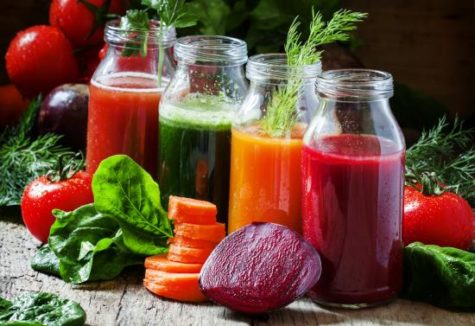
Treatment of Diseases
Some common ailments and fruit and vegetable juices found beneficial in their treatment are mentioned below :
- Acidity : Grapes, orange, mosambi, carrot and spinach.
- Acne : Grapes, pear, plum, tomato, cucumber, carrot, potato and spinach.
- Allergies : Apricot, grapes, carrot, beet and spinach.
- Arteriosclerosis : Grapefruit, pineapple, lemon, celery, carrot, lettuce, and spinach.
- Anemia : Apricot, prune, strawberry, red grape, beet, celery, carrot and spinach.
- Arthritis : Sour cherry, pineapple, sour apple, lemon, grapefruit, cucumber, beet, carrot, lettuce and spinach.
- Asthma : Apricot, lemon, pineapple, peach, carrot, radish and celery.
- Bronchitis : Apricot, lemon, pineapple, peach, tomato, carrot, onion and spinach.
- Bladder Ailments : Apple, apricot, lemon, cucumber, carrot, celery, parsley and watercress.
- Colds : Lemon, orange, grapefruit, pineapple, carrot, onion, celery and spinach.
- Constipation : Apple, pear, grapes, lemon, carrot, beet, spinach and watercress.
- Colitis : Apple, apricot, pear, peach, pineapple, papaya, carrot, beet, cucumber and spinach.
- Diabetes : Citrus fruits, carrot, celery, lettuce and spinach.
- Diarrhea : Papaya, lemon, pineapple, carrot and celery.
- Eczema : Red grapes,carrot, spinach, cucumber and beet.
- Epilepsy : Red grapes, figs, carrot, celery and spinach.
- Eye Disorders : Apricot ,tomato, carrot, celery, parsley and spinach.
- Gout : Red sour cherries, pineapple, tomato, cucumber, beet, carrot, celery and spinach.
- Halitosis : Apple, grapefruit, lemon, pineapple, tomato, carrot, celery and spinach.
- Headache : Grapes, lemon, carrot, lettuce and spinach.
- Heart Disease : Red grapes, lemon, cucumber, carrot, beet and spinach.
- High blood pressure : Grapes, orange, cucumber, carrot and beet.
- Influenza : Apricot, orange, lemon , grapefruit, pineapple, carrot, onion and spinach.
- Insomnia : Apple, grapes, lemon, lettuce , carrot and celery.
- Jaundice : Lemon, grapes, pear, carrot, celery, spinach, beet and cucumber.
- Kidney Disorders : Apple, orange, lemon, cucumber, cucumber,carrot, celery, parsley and beet.
- Liver ailments : Lemon, papaya, grapes, carrot, tomato, beet and cucumber.
- Menstrual Disorders :Grapes, prunes, cherry, spinach, lettuce turnips and beet.
- Menopausal Symptoms : Fruits and Vegetables in season.
- Neuritis : Orange, pineapple, apple, carrot and beet.
- Obesity : Lemon, grapefruit, orange, cherry, pineapple, papaya, tomato, beet, cabbage, lettuce, spinach and carrot.
- Piles : Lemon, orange, papaya, pineapple, carrot, spinach, turnip and watercress.
- Prostate Troubles : All fruit juices in season, carrot, asparagus, lettuce and spinach.
- Psoriasis : Grapes, carrot, beet, and cucumber.
- Rheumatism : Grapes, orange, lemon, grapefruit, tomato, cucumber, beet, carrot and spinach.
- Stomach Ulcers : Apricot, grapes, cabbage and carrot.
- Sinus Trouble : Apricot, lemon, tomato, carrot, onion and radish.
- Sore Throat : Apricot, grapes, lemon, pineapple, prune, tomato, carrot and parsley.
- Tonsillitis : Apricot, lemon, orange, grapefruit, pineapple, carrot, spinach and radish.
- Varicose Veins : Grapes, orange, plum, tomato, beetroot carrot and watercress.
When on a raw juice therapy, the prescribed juice should be drunk every three hours. One can thus take juices five to six times a day. A glass of water mixed with lemon juice and 20 to 30 grams of honey may be taken first thing in the morning on arising. Thereafter, the prescribed juice may be taken at three-hourly intervals.
The quantity of juice on each occasion may be 250 ml on the first day. This quantity may be increased by 50 ml each succeeding day till one takes 600 ml on each occasion. The juice diet can be continued for 30 to 40 days without any ill-effects.
The patient should take adequate rest during the raw juice therapy. Raw juices act as a cleansing agent and start eliminating toxins and morbid matter from the system immediately. This often results in symptoms such as pain in the abdomen, diarrhea, loss of weight, headache, fever, weakness, sleeplessness and bad breath.
These reactions, which are part of the cleansing process, should not be suppressed by the use of drugs. They will cease when the body is able to expel all toxins. After the raw juice therapy, the return to normal balanced diet should be gradual, and in stages. In the beginning, two juice meals may be replaced by milk and fruits. Then gradually juice meals may be substituted by a balanced-diet.
The Importance of Minerals
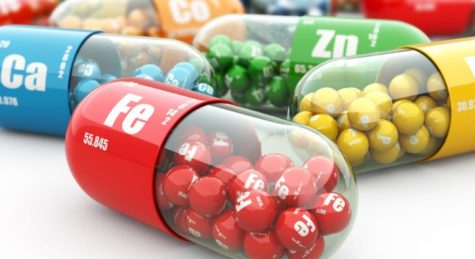
The term ‘ minerals ‘ refers to elements in their simple inorganic form. In nutrition they are commonly referred to as mineral elements or inorganic nutrients. Minerals are vital to health. Like vitamins and amino acids, minerals are essential for regulating and building the trillions of living cells which make up the body. Body cells receive the essential food elements through the blood stream. They must, therefore, be properly nourished with an adequate supply of all the essential minerals for the efficient functioning of the body.
Minerals help maintain the volume of water necessary to life processes in the body. They help draw chemical substances into and out of the cells and they keep the blood and tissue fluid from becoming either too acidic or too alkaline.
The importance of minerals, like vitamins, is illustrated by the fact that there are over 50,000 enzymes in the body which direct growth and energy and each enzyme has minerals and vitamins associated with it. Each of the essential food minerals does a specific job in the body and some of them do extra work, in teams, to keep body cells healthy.
The mineral elements which are needed by the body in substantial amounts are calcium, phosphorous, iron, sulfur, magnesium, sodium, potassium and chlorine. In addition the body needs minute (trace) amounts of iodine, copper, cobalt, manganese, zinc, selenium, silicon, fluorine and some others.
-
Calcium
The human body needs calcium more than any other mineral. A man weighing 70 kg. contains one kg. of calcium. About 99 per cent of the quantity in the body is used for building strong bones and teeth and the remaining one per cent is used by the blood, muscles and nerves.
Calcium performs many important functions. Without this mineral , the contractions of the heart would be faulty, the muscles would not contract properly to make the limbs move and blood would not clot. Calcium stimulates enzymes in the digestive process and coordinates the functions of all other minerals in the body.
Calcium is found in milk and milk products, whole wheat, leafy vegetables such as lettuce, spinach, and cabbage , carrots, watercress, oranges, lemons, almonds, figs and walnuts. A daily intake of about 0.4 to 0.6 grams of calcium is considered desirable for an adult. The requirement is larger for growing children and pregnant and lactating women.
Deficiency may cause porous and fragile bones, tooth decay, heart palpitations, muscle cramps, insomnia and irritability. A large increase in the dietary supply of calcium is needed in tetany and when the bones are decalcified due to poor calcium absorption, as in rickets, oesteomalacia and the mal-absorption syndrome. Liberal quantity of calcium is also necessary when excessive calcium has been lost from the body as in hyperparathyroidism or chronic renal disease.
-
Phosphorus
It combines with calcium to create the calcium-phorphorus balance necessary for the growth of bones and teeth and in the formation of nerve cells. This mineral is also essential for the assimilation of carbohydrates and fats. It is a stimulant to the nerves and brain. Phosphorous is found in abundance in cereals, pulses, nuts, egg yolk, fruit juices, milk and legumes. Usually about one gram of phosphorous is considered necessary in the daily diet.
A phosphorous deficiency may bring about loss of weight, retarded growth, reduced sexual powers and general weakness. It may result in poor mineralization of bones, deficient nerve and brain function.
While taking calcium in therapeutic doses for calcium deficiency conditions or for treating ailments, it is advisable to take the calcium supplement in which phosphorous has been added in the correct proportions. This is necessary as calcium cannot achieve its objectives unless phosphorous is present in a proper balance.
-
Iron
Iron is an important mineral which enters into the vital activity of the blood and glands. Iron exists chiefly as hemoglobin in the blood. It distributes the oxygen inhaled into the lungs to all the cells. It is the master mineral which creates warms, vitality and stamina. It is required for the healthy complexion and for building up resistance in the body.
The chief sources of iron are grapes, raisins, spinach, all green vegetables, whole grain, cereals, dried beans, dark colored fruits, beets, dates, liver and egg yolk. The Indian Council of Medical Research has recommended an allowance of 20 to 30 mg. of iron in a balanced diet for an adult.
Iron deficiency is generally caused by severe blood loss,malnutrition , infections and by excessive use of drugs and chemicals. Deficiency of dietary iron may cause nutritional-anemia, lowered resistance to disease, a general run down condition, pale complexion, shortness of breath on manual exertion and loss of interest in sex.
Iron is the classic remedy for anemia. However, there are several forms of anemia, and iron deficiency anemia is only one. If one is taking iron pills due to insufficient intake of iron in the normal diet, one should also take at least 40 mg. of folic acid or folate every day, along with 10 to 25 mg. of vitamin B12. Both these vitamins are essential in building healthy blood cells.
-
Sulphur
All living matter contains some sulphur; this element is therefore essential for life. The greater part of the sulphur in the human body is present in the two sulphur-containing amino acids, methionine and cysteine, or in the double form of the latter cystine.
The main purpose of sulphur is to dissolve waste materials. It helps to eject some of the waste and poisons from the system. It helps keep the skin clear of blemishes and makes hair glossy. It is also valuable in rheumatic conditions.
The main sulphur-containing foods are radishes, carrots, cabbage, cheese, dried beans, fish and eggs. There is no recommended dietary allowance. But a diet sufficient in protein will generally be adequate in sulphur.
Deficiency of sulphur may cause eczema and imperfect development of hair and nails. Sulphur creams and ointments have been remarkably successful in treating a variety of skin problems.
-
Magnesium
All human tissues contain small amounts of magnesium. The adult human body contains about 25 gms. of this mineral. The greater part of this amount is present in bones in combination with phosphate and carbonate. Bone ashes contain less than one per cent magnesium. About one-fifty of the total magnesium in the body is present in the soft tissues, where it is mainly bound to protein.
Next to potassium, magnesium is the predominant metallic action in living cells. The bones seem to provide a reserve supply of this mineral in case of shortage elsewhere in the body. Biochemists call magnesium the “cool, alkaline, refreshing, sleep-promoting mineral”. Magnesium helps one keep calm and cool during the sweltering summer months. It aids in keeping nerves relaxed and normally balanced. It is necessary for all muscular activity.
This mineral is in activator for most of the enzyme system involving carbohydrate, fat and protein in energy-producing reactions. It is involved in the production of lecithin which prevents building up of cholesterol and consequent atherosclerosis. Magnesium promotes a healthier cardiovascular system and aids in fighting depression. It helps prevent calcium deposits in kidneys and gallstones and also brings relief from indigestion.
Magnesium is widely distributed in foods. It is a part of the chlorophyll in green vegetables. Other good sources of this mineral are nuts, soy beans, alfalfa, apples, figs, lemons, peaches, almonds, whole grains, brown rice, sunflower seeds and sesame seeds.
The recommended dietary allowances for magnesium are 350 mg. per day for adult man, 300 mg. for women and 450 mg. during pregnancy and lactation.
Deficiency can lead to kidney damage and kidney stones, muscle cramps, arteriosclerosis, heart attack, epileptic seizures, nervous irritability, marked depression and confusion, impaired protein metabolism and premature wrinkles. Chronic alcoholics often show a low plasma magnesium concentration and a high urinary output. They may, therefore, require magnesium therapy especially in an acute attack of delirium tremens.
Magnesium has also proved useful in bladder and urinary problems and in epileptic seizure. This mineral together with vitamin B6 or pyridoxine has also been found effective in the prevention and treatment of kidney stones. Magnesium can be taken in therapeutic doses up to 700 mg. a day.
-
Sodium
Sodium Chloride , the chemical name for common salt, contains 39 per cent of sodium, an element which never occurs in free form in nature. It is found in an associated form with many minerals especially in plentiful amounts with chlorine. The body of a healthy person weighing about 65 kg. contains 256 g. of sodium chloride. Of this the major part, just over half, is in the extra-cellular fluid. About 96 g. is in bone and less than 32 g. in the cells.
Sodium is the most abundant chemical in the extra-cellular fluid of the body. It acts with other electrolytes, especially potassium, in the intracellular fluid, to regulate the osmotic pressure and maintain a proper water balance within the body. It is a major factor in maintaining acid-base equilibrium, in transmitting nerve impulses, and in relaxing muscles. It is also required for glucose absorption and for the transport of other nutrients across cell membranes.
Sodium can help prevent catarrh. It promotes a clear brain, resulting in a better disposition and less mental fatigue. Because of its influence on calcium, sodium can also help dissolve any stones forming within the body. It is also essential for the production of hydrochloric acid in the stomach and plays a part in many other glandular secretions.
There is some natural salt in every food we eat. Vegetable foods rich in sodium are celery, cucumbers, watermelon, lemons, oranges, grapefruit, beet-tops, cabbage, lettuce, corn, lady’s fingers, apple, berries, pears, squash, pumpkin, peaches, lentils, almonds and walnuts. Animal food sources include shell fish, lean beef, kidney, bacon and cheese.
The sodium chloride requirements for persons living in the tropics have been estimated at 10 to 15 g. per day for adults who are engaged in light work and 15 to 20 g. for those engaged in hard work. The requirements of children are from five to 10 g. and those for adolescent boys and girls from 10 to 25 g.
Both deficiency and excess of salt may produce adverse effects o the human body. Deficiencies of sodium are, however, rare and may be caused by excessive sweating, prolonged use of diuretics, or chronic diarrhea. Deficiency may lead to nausea, muscular weakness, heat exhaustion, mental apathy and respiratory failure.
Over-supply of sodium is a more common problem because of overuse of dietary sodium chloride or common salt. Too much sodium may lead to water retention, high blood pressure, stomach ulcers, stomach cancer, hardening of arteries and heart disease.
In case of mild deficiency of sodium chloride, taking a teaspoon of common salt in one half liter of water or any fruit juice quickly restores the health. In severe conditions, however, administration of sodium chloride in the form of normal saline by intravenous drip may be restored to.
The adverse effects of excessive use of sodium chloride can be rectified by avoiding the use of common salt.
-
Potassium
Potassium is essential to the life of every cell of a living being and is among the most generously and widely distributed of all the tissue minerals. It is found principally in the intracellular fluid where it plays an important role as a catalyst in energy metabolism and in the synthesis of glycogen and protein. The average adult human body contains 120 g. as potassium and 245 g. as potassium chloride. Out of this body potassium, 117 g. is found in the cells and 3 g. in the extracellular compartment.
Potassium is important as an alkalizing agent in keeping a proper acid-alkaline balance in the blood and tissues. It is essential for muscle contraction and therefore, important for proper heart function. It promotes the secretion of hormones and helps the kidneys in detoxification of blood. Potassium prevents female disorders by stimulating the endocrine hormone production. It is involved in the proper functioning of the nervous system and helps overcome fatigue. It also aids in clear thinking by sending oxygen to the brain and assists in reducing blood pressure.
Potassium is widely distributed in foods. All vegetables, especially green, leafy vegetables, grapes, oranges, lemons, raisins, whole grains, lentils, sunflower seeds, nuts, milk, cottage cheese and butter milk are rich sources. Potatoes, especial potato peelings, and bananas are especially good sources. Potassium requirements have not been established but on intake of 0.8 to 1.3 g. per day is estimated as approximately the minimum need.
Potassium deficiency may occur during gastrointestinal disturbances with severe vomiting and diarrhea, diabetic acidosis and potassium-losing nephritis. It causes undue nervous and body tiredness, palpitation of the heart, cloudiness of the mind, nervous shaking of the hands and feet, great sensitivity of the nerves to cold, and excessive perspiration of the feet and hands.
In simple cases of potassium deficiency, drinking plenty of tender coconut water daily, can make up for it. It is advisable to consume plenty of figs, apricots, prunes, almonds and tomatoes during the use of oral diuretics. Potassium-rich foods should be restricted during acute renal failure and Addison’s disease.
-
Chlorine
In the human body, chlorine is liberated by the interaction of common salt, taken along with food, and hydrochloric acid liberated in the stomach during the process of digestion. It is essential for the proper distribution of carbon dixoxide and the maintenance of osmotic pressure in the tissues.
This food element is necessary for the manufacture of glandular hormone secretions. It prevents the building of excessive fat and auto-intoxication. Chlorine regulates the blood’s alkaline -acid balance and works with Potassium in a compound form. It aids in the cleaning out of body waste by helping the liver to function.
Chlorine is found in cheese and other milk products, green leafy vegetables, tomatoes, all berries, rice, radishes, lentils, coconuts and egg yolk. No dietary allowance has been established, but an average intake of daily salt will ensure adequate quantity of chlorine. Deficiency of this mineral can cause loss of hair and teeth.
-
Iodine
The chief store-house of iodine in the body is the thyroid gland. The essential thyroxine, which is secreted by this gland, is made by the circulating iodine. Thyroxine is a wonder chemical which controls the basic metabolism and oxygen consumption of tissues. It increases the heart rate as well as urinary calcium excretion. Iodine regulates the rate of energy production and body weight and promotes proper growth. It improves mental alacrity and promotes healthy hair, nails, skin and teeth.
The best dietary sources of iodine are kelp and other seaweeds. Other good sources are turnip greens, garlic, watercress, pineapples, pears, artichokes, citrus fruits, egg yolk and seafood and fish liver oils.
The recommended dietary allowances are 130 mcg. per day for adult males and 100 mcg. per day for adult females. An increase to 125 mcg. per day during pregnancy and to 150 mcg. per day during lactation has been recommended.
Deficiency can cause goiter and enlargement of the thyroid glands. Small doses of iodine are of great value in the prevention of goiter in areas where it is endemic and are of value in treatments, at least in the early stages. Larger doses have a temporary value in the preparation of patients with hyperthyroidism for surgical operation.
-
Copper
There are approximately 75 to 150 mg. of copper in the adult human body. Newborn infants have higher concentrations than adults. Liver, brain, kidney, heart, and hair contain relatively high concentration. Average serum copper levels are higher in adult females than in males. Serum copper levels also increase significantly in women both during pregnancy and when taking oral contraceptives.
This mineral helps in the conversion of iron into hemoglobin. It stimulates the growth of red blood cells. It is also an integral part of certain digestive enzymes. It makes the amino acid tyrosine usable, enabling it to work as the pigmenting factor for hair and skin. It is also essential for the utilization of vitamin C.
Copper is found in most foods containing iron, especially in almonds, dried beans, peas, lentils, whole wheat, prunes and egg yolk. The recommended dietary allowance has not been established but 2 mg. is considered adequate for adults. A copper deficiency may result in bodily weakness, digestive disturbances and impaired respiration.
-
Cobalt
Cobalt is a component of vitamin B12, a nutritional factor necessary for the formation of red blood cells. Recent research in vitamin B12 has shown that its pink color is attributed to the presence of cobalt in it. The presence of this mineral in foods helps the synthesis of hemoglobin and the absorption of food- iron.
The best dietary sources of cobalt are meat, kidney and liver. All green leafy vegetables contain some amount of this mineral. No daily allowance has been set. Only a very small amount up to 8 mcg. is considered necessary.
-
Manganese
The human body contains 30 to 35 mg. of manganese, widely distributed throughout the tissues. It is found in the liver , pancreas, kidney, pituitary glands. This mineral helps nourish the nerves and brain and aids in the coordination of nerve impulses and muscular actions. It helps eliminate fatigue and reduces nervous irritability.
Manganese is found in citrus fruits, the outer covering of nuts, grains, in the green leaves of edible plants, fish and raw egg yolk. No official daily allowance of manganese has been established, but 2.5 to 7 mg. is generally accepted to be the average adult requirement. A deficiency of this mineral can lead to dizziness, poor elasticity in the muscles, confused thinking and poor memory.
-
Zinc
There are about two grams of zinc in the body where it is highly concentrated in the hair, skin, eyes, nails and testes. It is a constituent of many enzymes involved in metabolism. Zinc is a precious mineral.
Our need for this mineral is small but its role in growth and well-being is enormous, starting before birth. It is needed for healthy skin and hair, proper healing of wounds, successful pregnancies and male virility. It plays a vital role in guarding against diseases and infection. It is needed to transport vitamin A to the retina. There are 156 enzymes that require zinc for their functioning. It has long been known that growth and sexual maturity depend on zinc.
The main dietary sources of zinc are milk, liver, beans, meat, whole grains, nuts, and seeds. The recommended dietary allowance of zinc is 15 mg. daily.
Deficiency can result in weight loss, skin diseases, loss of hair, poor appetite, diarrhea and frequent infection. Those suffering from rheumatoid arthritis may have a zinc deficiency. Heavy drinkers lose a lot of zinc in their urine.
-
Selenium
Selenium and vitamin E are synergistic and the two together are stronger than the sum of the equal parts. Selenium slows down ageing and hardening of tissues through oxidation. Males seem to have a greater need for this mineral. Nearly half of the total supply in the body is concentrated in the testicles and in the seminal ducts adjacent to the prostate gland.
Selenium is useful in keeping youthful elasticity in tissues. It alleviates hot flushes and menopausal distress. It also helps in the prevention and treatment of dandruff.
This mineral is found in Brewer’s yeast, garlic, onions, tomatoes, eggs, milk and sea food. There is no official dietary allowance for selenium but, 50 to 100 mcg. is considered adequate. Deficiency of this mineral can cause premature loss of stamina.
-
Silicon
This is known as the ” beauty mineral ” as it is essential for the growth of skin, hair shafts, nails and other outer coverings of the body. It also makes the eyes bright and assists in hardening the enamel of the teeth. It is beneficial in all healing process and protects body against many diseases such as tuberculosis, irritations in mucous membranes and skin disorders.
Silicon is found in apples, cherries, grapes, asparagus, beets, onions, almonds, honey, peanuts and the juices of the green leaves of most other vegetables. No official dietary allowance has been established for this mineral.
Deficiency can lead to soft brittle nails, ageing symptoms of skin such as wrinkles, thinning or loss of hair, poor bone development, insomnia, osteoporosis.
-
Flourine
Fluorine is the element that prevents diseases from decaying the body. It is a germicide, and acts as an antidote to poison, sickness and disease. There is a strong affinity between calcium and fluorine. These two elements, when combined, work particularly in the outer parts of bones. They are found in the enamel of the teeth and the shiny, highly polished bone surface.
Fluorine is found in goat’s milk, cauliflower, watercress, garlic, beets, cabbage, spinach and pistachio nuts.
Minerals Are Important
Minerals thus play an important role in every bodily function and are present in every human cell. Although the amount needed may be small, without even the trace of the mineral, dysfunction is bound to occur at some level in the body. A zinc deficiency may show up in ridged fingernails with white spots. Lack of sulfur can cause lack-luster hair and dull-looking skin. Less obvious deficiencies may surface as fatigue, irritability, loss of memory, nervousness, depression and weakness.
Minerals also interact with vitamins. Magnesium, for instance, must be present in the body for utilization of B-complex, C and E vitamins. Sulfur also works with the B-complex vitamins. The body needs all the trace minerals in proper balance.
Coffee, tea, alcohol, excess salt and many drugs can rob the body of minerals or make them ineffective. Industrial pollutants cause toxic minerals to enter the body. Minerals at toxic levels also have the effect of destroying the usefulness of other vitamins and minerals.
Exercise improves the activity of certain vitamins and minerals while stress and fatigue work against them. A well-balanced diet provides as abundance of minerals and vitamins. In refining cereals, grains and sugar, we have robbed them of their natural vitamins and minerals.
The dietary sources of these nutrients are whole grains, cereals, bran and germ. It is the bran and germ which are removed in processing. To obtain a balance of nutrients, it is, therefore, necessary to avoid refined and processed foods but an intake of adequate green leafy vegetables which are an excellent source of many nutrients should be ensured.
The Importance of Vitamins
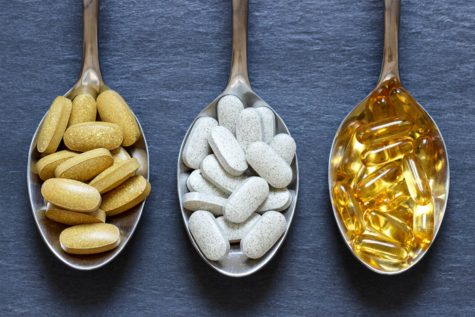
The word ‘ Vitamine’ meaning a vital amine was proposed by a Polish Researcher, Dr. Cacimir Funk, in 1911 to designate a new food substance which cured beri-beri. Other terms were proposed as new factors were discovered. But the word vitamin , with the final ‘e’ dropped, met with popular favor.
Vitamins are potent organic compounds which are found in small concentrations in foods. They perform specific and vital functions in the body chemistry. They are like electric sparks which help to run human motors. Except for a few exceptions, they cannot be manufactured or synthesized by the organism and their absence or improper absorption results in specific deficiency disease.
It is not possible to sustain life without all the essential vitamins. In their natural state they are found in minute quantities in organic foods. We must obtain them from these foods or in dietary supplements.
Vitamins, which are of several kinds, differ from each other in physiological function, in chemical structure and in their distribution in food. They are broadly divided into two categories, namely, fat-soluble and water-soluble.
Vitamins A, D, E and K are all soluble in fat and fat solvents and are therefore, known as fat-soluble. They are not easily lost by ordinary cooking methods and they can be stored in the body to some extent, mostly in the liver. They are measured in international units.
Vitamin B Complex and C are water soluble. They are dissolved easily in cooking water. A portion of these vitamins may actually be destroyed by heating. They cannot be stored in body and hence they have to be taken daily in foods. Any extra quantity taken in any one day is eliminated as waste. Their values are given in milligrams and micrograms, whichever is appropriate.
Vitamins, used therapeutically, can be of immense help in fighting disease and speeding recovery. They can be used in two ways, namely, correcting deficiencies and treating disease in place of drugs. Latest researches indicate that many vitamins taken in large doses far above the actual nutritional needs, can have a miraculous healing effect in a wide range of common complaints and illnesses.
Vitamin therapy has a distinct advantage over drug therapy. While drugs are always toxic and have many undesirable side effects, vitamins , as a rule are non-toxic and safe. The various functions of common vitamins, their deficiency symptoms, natural sources, daily requirements and their therapeutic uses are discussed in brief as follows:
Vitamin A
Known as anti-opathalmic, vitamin A is essential for growth and vitality. It builds up resistance to respiratory and other infections and works mainly on the eyes, lungs, stomach and intestines. It prevents eye diseases and plays a vital role in nourishing the skin and hair. It helps to prevent premature ageing and senility, increases life expectancy and extends youthfulness.
The main sources of this vitamin are fish liver oil, liver, whole milk, curds, pure ghee, butter, cheese, cream and egg yolk, green leafy and certain yellow root vegetables such as spinach, lettuce, turnip, beets, carrot, cabbage and tomato and ripe fruits such as prunes, mangoes, papaya, apricots, peaches, almonds and other dry fruits.
A prolonged deficiency of vitamin A may result in inflammation of the eyes, poor vision frequent colds, night blindness and increased susceptibility to infections, lack of appetite and vigor, defective teeth and gums and skin disorders.
The recommended daily allowance of vitamin A is 5,000 international units for adults and 2,600 to 4,000 international units for children. When taken in large therapeutic doses, which are usually 25,000 to 50,000 units a day, it is highly beneficial in the treatment of head and chest colds, sinus trouble, influenza and other infectious diseases. It is also valuable in curing night blindness and other eye diseases as well as many stubborn skin disorders.
This vitamin can be given up to 1,00,000 units a day for a limited period of four weeks under doctor’s supervision. In a recent year-long study, huge doses of vitamin A given twice a year reduced death by about 30 per cent among Indonesian children. This has raised the hope in the fight against a significant cause of childhood mortality in developing countries.
B Complex Vitamins
There are a large variety of vitamins in the B group, the more important being B1 or thiamine, B2 or riboflavin, B3 or niacin or nicotinic acid, B6 or pyridoxine, B9 or folic acid, B12 and B5 or pantothenic acid. B vitamins are synergistic. They are more potent together than when used separately.
- Thiamine
Known as anti-beberi, anti-neuritic and anti-ageing vitamin, thiamine plays an important role in the normal functioning of the nervous system, the regulation of carbohydrates and good digestion. It protects heart muscle, stimulates brain action and helps prevent constipation. It has a mild diuretic effect.
Valuable sources of this vitamin are wheat germ, yeast, the outer layer of whole grains, cereals, pulses, nuts, peas, legumes, dark green leafy vegetables, milk, egg,banana and apple.
The deficiency of thiamine can cause serious impairment of the digestive system and chronic constipation, loss of weight, diabetes, mental depression, nervous exhaustion and weakness of the heart.
The recommended daily allowance for this vitamin is about two milligrams for adults and 1.2 mg. for children. The need for this vitamin increases during illness, stress and surgery as well as during pregnancy and lactation. When taken in a large quantity, say up to 50 mg, it is beneficial in the treatment of digestive disorders, neuritis and other nervous troubles as well as mental depression.
For best results, all other vitamins of B group should be administered simultaneously. Prolonged ingestion of large doses of any one of the isolated B complex vitamins may result in high urinary losses of other B-vitamins and lead to deficiencies of these vitamins.
- Riboflavin
Vitamin B2 or riboflavin, also known as vitamin G, is essential for growth and general health as also for healthy eyes, skin, nails and hair. It helps eliminate sore mouth, lips and tongue. It also functions with other substances to metabolize carbohydrates, fats, and protein.
The main sources of this vitamin are green leafy vegetables, milk, cheese, wheat germ, egg, almonds, sunflower, seeds, citrus fruits and tomatoes.
Its deficiency can cause a burning sensation in the legs, lips and tongue, oily skin, premature wrinkles on face and arm and eczema.
The recommended daily allowance for this vitamin is 1.6 to 2.6 mg. for adults and 0.6 to one mg for children. Its use in larger quantities, say from 25 to 50 mg. is beneficial in the treatment of nutritional cataracts and other eye ailments, digestive disturbances, nervous depression, general debility, and certain types of high blood pressure.
- Niacin
Vitamin B3 or niacin or nicotinic acid is essential for proper circulation, healthy functioning of the nervous system and proper protein and carbohydrate metabolism. It is essential for synthesis of sex hormones, cartisone, thyroxin and insulin. It is contained in liver, fish, poultry, peanut, whole wheat,green leafy vegetables, dates, figs, prunes and tomato.
A deficiency can lead to skin eruptions, frequent stools, mental depression, insomnia, chronic headaches, digestive disorders and anemia.
The recommended daily allowance is 12 to 20 mg. for adults and 4.8 to 12 mg. for children. Large doses of this vitamin say up to 100 mg. with each meal, preferably together with other B group vitamins, affords relief in case of migraine and high blood pressure caused by nervousness, high cholesterol and arteriosclerosis.
- Pyridoxine
Vitamin B 6 or pyridoxine is actually a group of substance – pyridoxine, pyridoxinal and pyridoxamine – that are closely related and function together. It helps in the absorption of fats and proteins, prevents nervous and skin disorders and protects against degenerative diseases.
The main sources of this vitamin are yeast, wheat, bran, wheat germ, pulses, cereals, banana, walnuts, soy beans , milk, egg, liver, meat and fresh vegetables. Deficiency can lead to dermatitis, conjunctivitis, anemia, depression, skin disorders, nervousness, insomnia, migraine headaches and heart disease.
The recommended daily requirement is 2.0 mg. for adults and 0.2 mg. for children. This vitamin used therapeutically from 100 to 150 mg. daily can relieve painful joints and the discomforts of pregnancy and pre-menstrual symptoms.
Vitamin B6 is now the most intensively studied of all vitamins. Researches are on the threshold of a number of promising developments involving treatments of various ailments with this vitamin. They include hyperactivity in children, asthma, arthritis, kidney stones, blood clots in heart attack victims and nervous disorders.
- Folic Acid
Vitamin B9 or folic acid, along with vitamin B12 is necessary for the formation of red blood cells. It is essential for the growth and division of all body cells for healing processes. It aids protein metabolism and helps prevent premature graying.
Valuable sources of this vitamin are deep green leafy vegetables such as spinach, lettuce, brewers yeast, mushrooms, nuts, peanuts and liver.
A deficiency can result in certain types of anemia, serious skin disorders, loss of hair, impaired circulation, fatigue and mental depression.
The minimum daily requirement of this vitamin is 0.4 mg. To correct anemia and deficiencies 5 mg or more are needed daily. Some authorities believe that folic acid is contraindicated in leukemia and cancer.
- Pantothenic Acid
Vitamin B5 or pantothenic acid helps in cell building, maintaining normal growth and development of the central nervous system. It stimulates the adrenal glands and increases the production of cortisone and other adrenal hormones. It is essential for conversion of fatty and sugar to energy. It also helps guard against most physical and mental stresses and toxins and increases vitality.
The main sources of this vitamin are whole grain bread and cereals, green vegetables,peas , beans, peanuts and egg yolk. It can be synthesized in the body by intestinal bacteria. A deficiency can cause chronic fatigue, hypoglycemia, graying and loss of hair, mental depression, stomach disorders, blood and skin disorders.
The minimum daily requirement of this vitamin has not been established, but is estimated to be between 30 and 50 mg a day. The usual therapeutic doses are 50 to 200 mg. In some studies, 1,000 mg or more were given daily for six moths without side effects. It is useful in the treatment of insomnia, low blood pressure and hypoglycemia or low blood sugar.
- Vitamin B12
Vitamin B12 or cobolamin, commonly known as “red vitamin” , is the only vitamin that contains essential mineral elements. It is essential for proper functioning of the central nervous system, production and regeneration of red blood cells and proper utilization of fat, carbohydrates and protein for body building. It also improves concentration, memory and balance.
Valuable sources of this vitamin are kidney, liver, meat, milk, eggs, bananas and peanuts. Its deficiency can lead to certain types of anemia, poor appetite and loss of energy and mental disorders.
The recommended daily allowance of this vitamin is 3 mcg. Taken in large therapeutic doses from 50 to 100 mcg., it is beneficial in the treatment of lack of concentration, fatigue, depression, insomnia and poor memory.
Vitamin C
Vitamin C or ascorbic acid is essential for normal growth and the maintenance of practically all the body tissues, especially those of the joints, bones, teeth, and gums. It protects one against infections and acts as a harmless antibiotic. It promotes healing and serves as protection against all forms of stress and harmful effects of toxic chemicals. It helps prevent and cure the common cold. It also helps in decreasing blood cholesterol.
This vitamin is found in citrus fruits, berries, green and leafy vegetables, tomatoes, potatoes, sprouted sprouted bengal (a variety of chickpea) and green grams (mung beans).
A deficiency can cause scurvy marked by weakness, anemia, bleeding gums and painful and swollen parts, slow healing of sores and wounds, premature ageing and lowered resistance to all infections.
The recommended daily allowance is 50 to 75 mg. for adults and 30 to 50 mg. for children. Smokers and older persons have greater need for vitamin C. It is used therapeutically in huge doses from 100 to 10,000 mg. a day.
It prevents and cures colds and infections effectively, neutralizes various toxins in the system, speeds healing processes in virtually all cases of ill health, increases sexual vitality and prevents premature ageing. According to Dr. Linus Pauling, a world famous chemist and nutrition expert, ” because vitamin C is one of the least toxic vitamins, it is very safe to use in high doses. ” Your body will take exactly what it needs and excrete any excess naturally.”
Vitamin D
Vitamin D is necessary for proper bone and teeth formation and for the healthy functioning of the thyroid gland. It assists in the assimilation of calcium, phosphorus and other minerals from the digestive tract.
This vitamin is found in the rays of the sun, fish, milk, eggs, butter and sprouted seeds. A deficiency can cause gross deformation of bones and severe tooth decay.
The recommended daily allowance of this vitamin for both adults and children is 400 to 500 international units. Therapeutically, up to 4,000 to 5,000 units a day for adult or half of this for children, is a safe dose, if taken for not longer than one month.
It is beneficial in the treatment of muscular fatigue, constipation and nervousness. It can be toxic if taken in excessive doses, especially for children. Signs of toxicity are unusual thirst, sore eyes, itching skin, vomiting, diarrhea, urinary urgency, abnormal calcium deposits in blood vessel walls, liver, lungs, kidneys and stomach.
Vitamin E
Vitamin E is essential for normal reproductive functions, fertility and physical vigor. It prevents unsaturated fatty acids, sex hormones and fat soluble vitamins from being destroyed in the body by oxygen. It dilutes blood vessels and improves circulation. It is essential for the prevention of heart diseases, asthma, arthritis, and many other conditions.
It is available in wheat or cereals germ, whole grain products, green leafy vegetables, milk, eggs, all whole, raw or sprouted seeds and nuts.
Its deficiency can lead to sterility in men and repeated abortions in women, degenerative developments in the coronary system, strokes and heart disease.
The official estimated requirement of this vitamin is 15 international units. Expert nutritionists estimate the actual requirement at 100 to 200 I.U. a day. The therapeutic doses are from 200 to 2400 I.U. daily.
It is beneficial in the treatment of various forms of paralysis, diseases of the muscles, atherosclerotic heart disease by diluting blood vessels. It prevents formation of scars in burns and post-operation healing. It protects against many environmental poisons in air, water and food. It also has a dramatic effect on the reproductive organs and prevents miscarriage, increases male and female fertility and helps to restore male potency.
Vitamin K
Vitamin K is necessary for the proper clotting of blood, prevention of bleeding and normal liver functions. It aids in reducing excessive menstrual flow.
This vitamin is contained in egg yolk, cow’s milk, yogurt, alfalfa, green and leafy vegetables, spinach, cauliflower, cabbage and tomato. Its deficiency can lead to sufficient bile salts in the intestines, colitis, lowered vitality and premature ageing.
Therapeutic Value of Massage
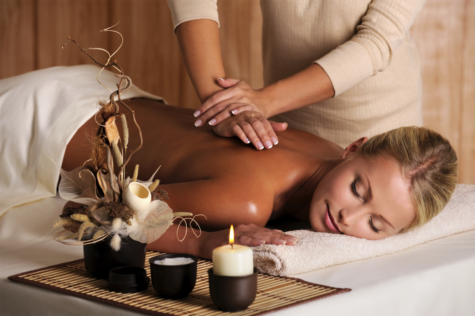
Massage is an excellent form of passive exercise. The word is derived from the Greek word ‘massier’ which means to knead. It involves the scientific manipulation of the soft tissues of the body. If correctly done on a bare body, it can be highly stimulating and invigorating. As far back as 400 B.C. , the great Hippocrates, the father of medicine, employed massage and manipulation in healing his patients. Since then it has been used as a mode of treatment for many ailments and it has restored many a sufferer to health and vigor.
Benefits
The general massage, dealing with all parts of the body, is highly beneficial in many ways. It tones up the nervous system, influences respiration and quickens the elimination of poisons and waste material from the body through the various eliminative organs such as the lungs, skin, kidneys and bowels. It also boosts blood circulation and metabolic processes. A massage removes facial wrinkles , helps to fill out hollow cheeks and neck and eases stiffness, sore muscles and numbness.
Various movements
There are five fundamental modes of manipulation in massage and these are : effleurage (stroking), friction ( rubbing), petrissage ( kneading), tapotment (percussion) and vibration (shaking or trembling).
- Effleurage
This involves sliding with the hands, using long even strokes over the surface of the body. Effleurage is performed in five ways, namely stroking with palms of two hands; the palm of one hand; the knuckles; the ball of the thumb and the finger tips. Effleurage increases blood circulation and soothes the nervous system. It also warms and relaxes. It is very helpful in atrophied condition of the skin.
- Friction
The movements, which are circular in nature are performed with the help of the thumb and tips of fingers or the palm of the hand towards the joints or around the joints. Friction limbers up joints, tendons, and muscles and facilitates the removal of deposits by breaking them. It also helps in reducing swelling after nerve inflammation.
- Petrissage
This is the process of kneading, pressing and rolling of the tissues and is performed with one or both hands, with two thumbs or with thumbs and fingers. One should apply heavy pressure for deep kneading and light pressure for superficial kneading. Petrissage is a treatment of the muscles. It increases nutrition, strengthens muscles, relieves intestinal congestion and helps elimination of the poisons. It boosts long activity and cellular respiration, eliminates fatigue poisons and tones up nerve endings.
- Tapotement
This involves hacking, tapping, clapping and beating and is achieved by striking the body rapidly. Short and quick blows are generally given from the wrist. Tapotement helps in atrophied condition of the muscles. It increases blood supply, soothes nerves and strengthens muscles.
- Vibrations
This is achieved by rapidly shaking the pressing movements by use of the hand or fingers on the body. Vibrating hand should move constantly. This is beneficial in neuritis and neuralgia after the inflammatory stage is over. It stimulates circulation, glandular activity and nervous plexuses. It also helps in bowel movement. Another form of massage helpful in most elements is the vibratory massage. This can be done by trained persons only. The vibratory muscles is more efficiently administered by a special, electrically operated machine.
Material for Massage
Cotton seed oil is most commonly used for massaging, but butter is used for filling out cheeks and the neck and also for breast enlargement. If the patient is averse to oil, talcum powder may be used. Oil should not be used by persons with excessive body hair. General body massage may be done for 40 to 45 minutes and local body massage for 10 to 15 minutes. The oil should be washed off completely after massage.
Therapeutic Uses
Massage can be used with advantage as a method of treatment for many common ailments. The various forms of massage and their usefulness in various diseases are described here in brief.
- Massage of the Joints
Stiff and swollen joints can be cured by massage combined with mechanical movements. Massage is, however, not recommended in serious inflammatory cases of the joints and in tubercular joints. It should also be avoided in infectious diseases like diphtheria and gonorrhea which cause formation of pus as massage may spread the pus to the entire system.
Sprains and bruises can be cured by massage. In these cases, affected parts should first be bathed with hot water for 15 to 30 minutes. Next the massage should be done for a few minutes. Gentle stroking and kneading is recommended on and around the injured tissues.
Fractures can also be treated through massage. This form of massage is of great help in atrophy of the muscles which usually follows if the muscles are not used for any length of time. This condition may also be brought about by injuries, diseases of the joints, inflammation of the muscles and nerves, and by too long use of cats, bandages and splints.
A human being carries one half of the weight of his body in the form of muscular tissues. One fourth of the blood supply circulates in the muscles. When one gets a good massage treatment, the muscles get regenerated and are then capable of holding half of the blood supply. Massage thus provides additional nourishment to feed the muscular tissues, helping them to grow strong. Tapping, striking, and vibrating help the muscle to develop its contractile power.
Muscle massage is brought by first effleurage, kneading, followed by tapotement. Later, active and passive movements are given. Massage is employed for eliminating muscle contraction and for breaking of adhesions. A little moderate kneading, and percussion cause muscles to contract and become stronger. Deep circular kneading and vibration loosens the muscles. Kneading under and round the muscles breaks up adhesions.
- Massaging the nerves
Massage benefits many nerve problems. In case of acute inflammation of the nerves, massage should be done carefully. Light and gentle stroking are recommended. Deep pressure should not be used on swollen nerves for it will increase the inflammation. All that is needed is just a gentle tapotement or beating of the nerve.
Nerve compression is recommended for soothing nerves. Grasp the limb with both hands, and create firm pressure around and down the arm. Start with the shoulder and proceed down to the wrist. As you leave the grip, bring the hands down a little and make another pressure. As a result, blood circulation will increase.
Spinal nerve compression is extremely beneficial. It is done by the palm of the hand. Vibration of the fingers stimulate it. Sleeplessness can be cured by long slow and gentle stroking down the spine and entire back.
- Abdominal Massage
This form of massage is beneficial in constipation. It stimulates the peristalsis of the small intestines, tones up the muscles of the abdomen walls and mechanically eliminates the contents of both large and small intestines. Abdominal massage should not be done in general, femoral, inguinal and umbilical hernia, inflammation of the uterus, bladder, ovaries and Fallopian tubes, kidney stones, bladder or gall bladder, ulcers of the stomach and intestines, and pregnancy.
Abdominal massage should not be done after a heavy meal, but after two hours or so. The bladder should be emptied before the massage. The patient is made to lie on his back with his knees drawn up. This enable the abdomen wall to relax. The masseur should stand at the right side of the patient and use his finger tips for friction round the umbilical region from right to left. He should likewise alternatively knead the walls and roll with both hands, making deep and firm pressure. He should knead with the hand and finger tips and keep clear of any wound or tender places. He should later take up massaging of the larger intestines.
The manipulation of the large intestine should begin on the right side. Keep it going upwards and across the transverse colon and move right down on the left side to the signoid flexure and rectum. Circular kneading should be done with the help of the three middle fingers. At the same time press into the contents of the abdomen, following the course of the larger colon with a crawling motion. Keep kneading by means of a few circular movements in one spot with the help of finger tips. Keep moving the fingers a little further along. Knead repeatedly.
Use knuckles of the hand to make deep pressure along the large colon, moving the hands along after each pressure. Once the kneading of the abdomen is over, follow up by tapotement with both hands cupped or use the knuckles of the hand. Vibration may also be employed. The patient could also be asked to do some gymnastic exercises for strengthening the walls of the abdomen.
Since blood pressure increases during abdominal manipulation, patients with hypertension should avoid abdominal massage. Massage should also be avoided in cases where there has been recent bleeding in the lungs, the stomach or the brain.
- Chest Massage
Chest massage is helpful in many ways. It strengthens the chest muscles, increases circulation and tones up the nervous system of chest, heart and lungs. It is especially recommended in weakness of the lungs,palpitation and organic heart disorders. Bust and mammary glands can be developed by proper massage. The patient is made to lie on the back with the arms at the sides.
The masseur starts manipulating the chest by means of strokes with both hands on each side of the breast bone. A circular motion is formed by the movement made up and down, moving down the chest. Next the muscle kneading is done by picking up the skin and muscles with both hands. Treatment is given to both sides of the chest likewise. Circular kneading is next done by placing one hand on each side of the breast bone and making the circular motion outward towards the side. Tapotement follows by hacking and slapping.
- Massage of Back
The purpose of the massage of the back is to stimulate the nerves and circulation for treating backache, rheumatic afflictions of the back muscles, and for soothing the nervous system. The patient is made to lie down with the arms at the sides. The masseur effleurages the back from the shoulders downwards using both hands on each side of the spine. Stroking is done from the sacrum upward. Friction follows with each hand at the sides of the spine going down slowly.
Next, kneading by muscle picking is done with squeezing. Alternate rapid pushing and pulling movement of the hands sliding down the spine. Circular kneading should also be done. The treatment should end by slapping, hacking and cupping on each side of the spine. Gentle stroking and light kneading of the back is relieving and soothing. Percussion and vibration result into stimulating experience. Vibration of the end of spine benefits the sacral nerves and pelvic organs. It is recommended in constipation, hemorrhoids, weakness and congestion of the bladder and sexual organs.
- Massage of the Throat
This helps to overcome headache, sore throat and catarrh of the throat. The patient is made to throw his head back. The masseur places palms of both hands on sides of neck with thumbs under the chin, and fingers under the ears. A downward stroke is next made towards the chest over the jugular veins. Do not exert heavily on the jugular veins.
Exercise in Health and Disease

A world famous physical educationist, Eugene Sandow, has very aptly said, ” Life is movement, stagnation is death. ” Physical exercise is essential for the maintenance of normal condition of life. Lack of natural exercise is one of the chief causes of weakness and ill-health.
In recent years, the need for exercise has been recognized even in sickness. Physio and occupational therapy are now standard procedures in medicine to restore the use of muscles and nerves that have been injured by disease or by accident. Patients with organic ailments are now advised to stay in bed for the minimum period considered necessary.
Exercise and Activity
For corrective living, it is essential to differentiate between exercise and activity. While both are important as they are involved in vital physical movement, they vary in degree and benefits. Both employ the body in voluntary movement.
Activity uses the body to a limited degree and generally to achieve a specific purpose. Exercise employs the body over the widest possible range of movement for the particular purpose of maintaining or acquiring muscle tone and control with maximum joint flexibility. Activity requires less physical effort and often less conscious effort once the routine has been established. Exercise demands considerable physical effort and is more beneficial as mental concentration is simultaneously employed.
Benefits
Systematic physical exercise has many benefits. The more important benefits are mentioned below: Regular exercise taken properly can achieve the increased use of food by the body, which contributes to health and fitness. The basal metabolic rate and habitual body temperature will slowly rise during several weeks of physical exercise, if the program is not too hard. The healthy person usually has abundant body heat and a warm radiant glow.
- Regular progressive physical exercise can bring about the balance of automatic, or involuntary , nervous system. The tone of the vagus nerve, one of the nerves that control sensation and motion, is strengthened. This accounts for stronger pulse waves, higher metabolism and better circulation.
- Exercise can prevent or reduce gravitational ptosis or sag, as it is commonly called. Ptosis results from uneven flow of blood in the feet, legs and lower abdomen.
- Improved capillary action in the working of muscular and brain tissue results from exercise carried to the point of real endurance. This permits greater blood flow and gives the muscles, including the heart, more resistance to fatigue. Massage, heat and moderate exercise are relatively ineffective in producing additional capillary action as compared with vigorous exercise.
- The full use of the lungs in vigorous exercise can reduce or prevent lung congestion due to lymph accumulation.
- Gas and intra-intestinal accumulations can be reduced by exercise that acts to knead and squeeze or vibrate the intraintestinal mass.
- Better respiratory reserve is developed by persistent exercise. This ensures better breath holding, especially after a standard exercise. With greater respiratory reserves, exercise become easier.
- Improvement in tone and function of veins can be accomplished by repetitiously squeezing and draining the blood out of them and then allowing them to fill.
- Sweating in exercise aids kidneys by helping to eliminate the waste matter from the body.
- Consistent exercise leads to improvement in quality of blood. Studies have shown improved hemoglobin levels, relatively greater alkalinity, improved total protein content and a grater red cell count.
- Systemic exercise promotes physical strength and mental vigor and strengthens will power and self control leading to harmonious development of the whole system.
Exercise promotes longevity Medical researchers at Harvard and Standford Universities who studied the habits and health of 17,000 middle-aged and older men, reported the first scientific evidence that even modest exercise helps prolong life.
Dr. Ralph S. Paffenberger, the visiting professor of epidemiology at the Harvard School of Pubic Health, who is the principal author of the report said, ” We have found a direct relationship between the level of physical activity and the length of life in the college men we have studied. ” He added,” This is the first good evidence that people who are active and fit have a longer life span than those who are not. ”
A strong connection between a hard and a healthy hard has also been convincingly demonstrated in the same study. The study showed that the less active persons ran a three times higher risk of suffering a fatal heart attack than did those who worked the hardest. Review of fatal heart attacks revealed that the less active men were also three times more likely to die unexpectedly and rapidly within an hour after the attack.
A parallel research report from doctors in Dulles also concluded, after a study of the lives and habits of 6,000 men and women, that the physically fit were less likely to develop hypertension. Dr. Steven N. Blair who headed the research group said, ” We followed the physical health and habits of these people for an average of four-and-a-half years and the data showed that the lack of physical fitness leads to hypertension. ”
Exercise increases calorie output. The body fat can be reduced by regular exercise. It is therefore, useful for weight reduction in conjunction with restricted food intake. According to a study by Dr. Peter Wood of Stanford University Medical School, author of “California Diet and Exercise Programme”, very active people eat about 600 more calories daily than their sedentary counterparts but weight about 20 per cent less.
Up to 15 hours after vigorous exercise, the body continues to burn calories at a higher rate than it would have without exercise. Moderate physical exercise has been found to be accompanied by less obesity and lower cholesterol levels. Regular exercise plays an important role in the fight against stress. It provides recreation and mental relaxation besides keeping the body physically and mentally fit. It is nature’s best tranquilizer.
Chronic fatigue caused by poor circulation can be remedied by undertaking some exercise on a daily basis. It helps relieve tension and induces sleep. Moderate physical exercise at the end of a try day can bring a degree of freshness and renewed energy.
Exercise also plays an important role in the treatment of depression. According to Dr. Robert Brown, a clinical associate professor at the University of Virginia School of Medicine, ” Exercise produces chemical and psychological changes that improves your mental health. It changes the levels of hormones in blood and may elevate your beta-endorphins (mood-affecting brain chemicals). Exercise also gives a feeling of accomplishment and thereby reduces the sense of helplessness. ”
Methods of Exercise
Several systems of exercise have been developed over the years, the most popular among them being the Swedish system and yoga asanas, the later having been practiced from ancient times in India. Whichever system you choose to adopt, the exercises should be performed systematically, regularly and under proper guidance. To be really useful, exercise should be taken in such a manner as to bring into action all the muscles of the body in a natural way.
Walking is one such exercise. It is, however, so gentle in character that one must walk several kilometers in a brisk manner to constitute a fair amount of exercise. Other forms of good exercise are swimming, cycling, horse-riding, tennis, etc.
Precautions
Vigorous exercise of any kind should not be taken for an hour and a half after eating, nor immediately before meals. Weak patients and those suffering from serious diseases like cancer, heart trouble, tuberculosis and asthma should not undertake vigorous exercise except under the supervision of a competent physician.
If exercising makes you tired, stop immediately. The purpose of exercise should be to make you feel refreshed and relaxed and not tired. The most important rule about the fitness plan is to start with very light exercise and to increase the effort in gradual and easy stages. The sense of well-being will begin almost immediately. One can start off with a brisk walk for 15 to 20 minutes. A comfortable sense of tiredness should be the aim.
It is valueless and possibly harmful to become exhausted or seriously short of breath. Perhaps, one should aim at activities which need about two-thirds of one’s maximum ability. One way to assess is to count your own pulse rate.
Counting of pulse is quite easy. Feel the pulse on your left wrist with the middle three fingers of your right hand. Press just firmly enough to feel the beat easily. Now count the number of beats in 15 seconds, with the help of a watch with clear second hand and calculate your rate by multiplying by four. At rest heart beats 70 to 80 times a minute. This rate increases during exercise. Really vigorous can produce rates as high as 200 beats per minute or more. Reasonable aim is to exercise at about two-thirds of maximum capacity. It follows that heart rate should be about 130 per minute during and just after exercise. Always avoid over-exertion and never allow your pulse go above 190 per minute minus your age.
The Curative Powers of Earth
Earth was used extensively for remedial purposes in ancient times as well as the middle ages. In modern times, it again came into prominence as a valuable therapeutic agent in the last century through the indefatigable efforts of Emanuel Felke, a German-born Lutheran minister who was nicknamed the “Clay Pastor.” Felke found that the forces of earth have remarkable effects upon the human body, especially during the night. These effects are described as refreshing, invigorating and vitalizing.
Felke believed that for wounds and skin diseases, application of clay or moistened earth was the only true natural bondage. The body is thus repaired with the element from which it is assumed to be made. Adolf Just ( 1838 – 1936) , one of the pioneers of nature cure in modern times, believed that all diseases, but especially the serious nervous troubles of our age, would lose their terrors, if only sleeping or lying on the earth at night became customary in the curing of diseases.
According to him, by sleeping on the ground, ” the entire body is aroused from its lethargy to a new manifestation of vital energy, so that it can now effectively remove old morbid matter and masses of old faces from the intestines, and receive a sensation of new health, new life and new unthought of vigor and strength.
” Going barefooted all day long, except when it is very cold, is also regarded as a valuable step towards achieving good health and true happiness. Men can draw vital energy and strength out of the earth through their feet. Jesus Christ also attached a great deal of importance to the practice of going barefooted. He himself was barefooted and commanded his disciples likewise. It is advisable to go entirely barefooted as often as possible, especially on the bare ground but in rooms with painted floors it is better to wear chappals (leather sandals), since the painted floor affects the body adversely if one walks on it with bare soles.
The American Indians lay great stress on earth treatment. They believe that healing power is strong in leaves and herbs, powerful in the air, but very powerful indeed in the earth. They have a custom to bury sufferers from all kinds of disease in the earth up to their necks, leave them there for some hours, and then remove them. They believe that many of them are cured. Presumably the body draws unto itself the healing minerals and some of the earth’s magnetism.
Mud Packs
Natural medicine practitioners at present are making increasing use of moistened earth in the treatment of diseases. The use of mud packs has been found highly beneficial and effective in the treatment of chronic inflammation caused by internal diseases, bruises, sprains, boils and wounds. This mode of treatment is normally adopted in conjunction with a proper scheme of dietary and other natural therapies.
The advantage of mud treatment is that it is able to retain moisture and coolness for longer periods than cold water packs or compresses. The cold moisture in the mud packs relaxes the pores of the skin, draws the blood into the surface, relieves inner congestion and pain, promotes heat radiation and elimination of morbid matter.
A mud pack is prepared with clay obtained from about ten cms. below the surface of the earth, after ensuring that it does not contain any impurities such as compost or pebbles. The clay is then made into a smooth paste with warm water. This is allowed to cool and then spread on a strip of cloth, the size of which may vary according to requirements. The dimensions of the pack meant for application on the abdomen are generally 20 cms. X 10 cm.X 2.5 cm. for adults.
Mud packs have been found to be a valuable treatment of diseases relating to general weakness or nervous disorders. It can also bring down fever and is beneficial in the treatment of scarlet fever, measles and influenza. The mud pack is prescribed for swellings, eye and ear troubles, gout, rheumatism, stomach troubles, kidney and liver malfunctions, diptheria, neuralgia, sexual disorders, headache, toothache and general aches and pains.
The mud bandage, after being placed on the body, should be covered with flannel or other protective material. The pack is applied for 10 to 30 minutes. As the abdomen is the seat of most diseases, mud pack applied to this part of the body can cure many disorders including all forms of indigestion affecting the stomach and bowels. It is most effective in decreasing the external heat and breaking up the morbid matter. It also aids the inactivity of labor pains and for this purpose, the pack may be renewed every hour or two.
The mud pack is also helpful as an alternate treatment. The area under treatment is first given fomentation for five to 10 minutes until it is well heated. Mud is then applied directly to the skin for five to 15 minutes, depending upon the reaction required. Hot and cold applications are useful in relieving chronic pains, intestinal cramps and lumbago. Alternate application helps to relieve discomfort caused by flatulence and intestinal obstructions. It is also helpful in amoebiasis, colitis, enteritis and other inflammatory conditions of bacterial origin.
Mud Bath
Mud or clay bath is another mode of treatment. It is applied in the same way as packs, but only on a larger scale on the entire body. In this, mud or clay is first ground and sifted to remove all impurities, and then made into a smooth paste mixed with hot water. The paste is then spread on a sheet which in turn is wrapped round the body. One or two blankets are then wrapped over this, depending on the temperature of the room and that of the pack. A mud bath is followed with a cleansing warm water bath and a short cold shower.
The mud bath is found to tone up the skin by increasing the circulation and energizing the skin tissues. Frequent mud baths help to improve the complexion, clear spots and patches on the skin following skin disorders or due to smallpox. It is very beneficial in the treatment of skin diseases like psoriasis, leucoderma and every leprosy. This bath is also valuable in getting relief from rheumatic pain or pain in the joints caused by injuries.
The duration of the bath should be from 30 minutes to one hour. Care should also be taken to avoid the patient catching a chill during the bath. Mud applications also form a vital part of natural beauty treatment.
About Therapeutic Baths
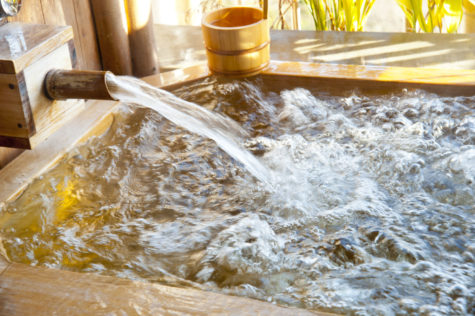
Water has been used as a valuable therapeutic agent since time immemorial. In all major ancient civilizations, bathing was considered an important measure for the maintenance of health and prevention of disease. It was also valued for its remedial properties. The ancient Vedic literature in India contains numerous references to the efficacy of water in the treatment of disease.
In modern times, the therapeutic value of water was popularized by Vincent Priessnitz, Father Sebastian Kneipp, Louis Kuhne and other European water-cure pioneers. They raised water cure to an institutional level and employed it successfully for the treatment of almost every known disease. There are numerous spas and “Bads” in most European countries where therapeutic baths are used as a major healing agent.
Water exerts beneficial effects on the human system. It equalizes circulation, boosts muscular tone and aids digestion and nutrition. It also tones up the activity of perspiratory gland and in the process eliminates the damaged cells and toxic matter from the system.
The common water temperature chart is : cold 100C to 180C, neutral 320C to 360C and hot 400C to 450C. Above 450C, water loses its therapeutic value and is destructive.
The main methods of water treatment which can be employed in the healing of various diseases in a do-it-yourself manner are described below.
Cold Compress
This is a local application using a cloth which has been wrung out in cold water. The cloth should be folded into a broad strip and dipped in cold water or ice water. The compress is generally applied to the head ,neck, chest, abdomen and back.
The cold compress is an effective means of controlling inflammatory conditions of the liver, spleen, stomach, kidneys, intestines, lungs, brain, pelvic organs and so on. It is also advantageous in cases of fever and heart disease. The cold compress soothes dermities and inflammations of external portions of the eye. When the eyeball is affected, the cold compress should follow a short fomentation.
Hot Compress
This is a cold compress covered in such a manner as to bring warmth. A heating compress consists of three or four folds of linen cloth wrung out in cold water which is then covered completely with dry flannel or blanket to prevent the circulation of air and help accumulation of body heat. It is sometimes applied for several hours. The duration of the application is determined by the extent and location of the surface involved, the nature and thickness of the coverings and the water temperature.
After removing the compress, the area should be rubbed with a wet cloth and then dried with a towel. A heating compress can be applied to the throat, chest, abdomen, and joints. A throat compress relieves sore throat, hoarseness, tonsillitis, pharyngitis and laryngitis.
An abdominal compress helps those suffering from gastritis, hyperacidity, indigestion, jaundice, constipation, diarrhea, dysentery and other ailments relating to the abdominal organs. The chest compress also known as chest pack, relieves cold, bronchitis, pleurisy, pneumonia, fever, cough and so on, while the joints compress is helpful for inflamed joints, rheumatism, rheumatic fever and sprains.
Enema
Also known as rectal irrigation, an enema involves the injection of fluid into the rectum. In nature cure treatment, only lukewarm water is used for cleaning the bowels. The patient is made to lie on his left side extending his left leg and bending the right leg slightly. The enema nozzle, lubricated with oil or Vaseline, is inserted in the rectum. The enema can containing the lukewarm water is then slowly raised and water is allowed to enter into the rectum. Generally, one to two liters of water is injected. The patient may either lie down on his back or walk a little while retaining the water. After five to 10 minutes, the water can be ejected along with the accumulated morbid matter.
A warm water enema helps to clean the rectum of accumulated fecal matter. This is not only the safest system for cleaning the bowels, but also improves the peristaltic movement of the bowels and thereby relieves constipation. A cold water enema is helpful in inflammatory conditions of the colon, especially in cases of dysentery, diarrhea, ulcerative colitis, hemorrhoids and fever. A hot water enema is beneficial in relieving irritation due to inflammation of the rectum and painful hemorrhoids. It also benefits women in leucorrhoea.
Hip Baths
The hip bath is one of the most useful forms of hydrotherapy. As the name suggests, this mode of treatment involves only the hips and the abdominal region below the navel. A special type of tub is used for the purpose. The tub is filled with water in such a way that it covers the hips and reaches up to the navel when the patient sits in it. Generally, four to six gallons of water are required. If the special tub is not available, a common tub may be used. A support may be placed under one edge to elevate it by two or three inches. Hip bath is given in cold, hot, neutral or alternate temperatures.
- Cold Hip Bath
The water temperature should be 100C to 180C. The duration of the bath is usually 10 minutes, but in specific conditions it may vary from one minute to 30 minutes. If the patient feels cold or is very weak, a hot foot immersion should be given with the cold hip bath.
The patient should rub the abdomen briskly from the navel downwards and across the body with a moderately coarse wet cloth. The legs, feet and upper part of the body should remain completely dry during and after the bath. The patient should undertake moderate exercise like yoga asanas, after the cold hip bath, to warm the body.
A cold hip bath is a routine treatment in most diseases. It relieves constipation, indigestion, obesity and helps the eliminative organs to function properly. It is also helpful in uterine problems like irregular menstruation, chronic uterine infections, pelvic inflammation, piles, hepatic congestion, chronic congestion of the prostate gland, seminal weakness, impotency, sterility, uterine and ovarian displacements, dilation of the stomach and colon, diarrhea, dysentery, hemorrhage of the bladder and so on. The cold hip bath should not be employed in acute inflammations of the pelvic and abdominal organs, ovaries and in painful contractions of the bladder, rectum or vagina.
- Hot Hip Bath
This bath is generally taken for eight to 10 minutes at a water temperature of 400C to 450C. The bath should start at 400C. The temperature should be gradually increased to 450C. NO friction should be applied to the abdomen. Before entering the tub,the patient should drink one glass of cold water. A cold compress should be placed on the head.
A hot hip bath helps to relieve painful menstruation, pain in the pelvic organs, painful urination, inflamed rectum or bladder and painful piles. It also benefits enlarged prostatic gland, painful contractions or spasm of the bladder, sciatica, neuralgia of the ovaries and bladder. A cold shower bath should be taken immediately after the hot hip bath.
Care should be taken to prevent the patient from catching a chill after the bath. The bath should be terminated if the patient feels giddy or complains of excessive pain.
- Neutral Hip Bath
The temperature of the water should be 320C to 360C. Here too, friction to the abdomen should be avoided. This bath is generally taken for 20 minutes to an hour. The neutral hip bath helps to relieve all acute and sub-acute inflammatory conditions such as acute catarrh of the bladder and urethra and subacute inflammations in the uterus, ovaries and tubes. It also relieves neuralgia of the Fallopian tubes or testicles, painful spasms of the vagina and prorates of the anus and vulva. Besides, it is a sedative treatment for erotomanis in both sexes.
- Alternate Hip Bath
This is also known as revulsive hip bath. The temperature in the hot tub should be 400C to 450C and in the cold tub 100C to 180C. The patient should alternately sit in the hot tub for five minutes and then in the cold tub for three minutes. The duration of the bath is generally 10 to 20 minutes. The head and neck should be kept cold with a cold compress. The treatment should end with a dash of cold water to the hips.
This bath relieves chronic inflammatory conditions of the pelvic viscera such as salpingitis, ovaritis, cellulitis and various neuralgias of the genito-urinary organs, sciatica and lumbago.
Spinal Bath
The spinal bath is another important form of hydrotherapic treatment. This bath provides a soothing effect to the spinal column and thereby influences the central nervous system. It is given in a specially designed tub with its back raised so as to provide proper support to the head. The bath can be administered at cold, neutral and hot temperatures. The water level in the tub should be an inch and a half to two inches and the patient should lie in it for three to 10 minutes.
The cold spinal bath relieves irritation, fatigue, hypertension and excitement. It is beneficial in almost all nervous disorders such as hysteria, fits, mental disorders, loss of memory and tension. The neutral spinal bath is a soothing and sedative treatment, especially for the highly strung and irritable patient. It is the ideal treatment for insomnia and also relieves tension of the vertebral column. The duration of this bath is 20 to 30 minutes.
The hot spinal bath, on the other hand, helps to stimulate the nervous, especially when they are in a depressed state. It also relieves vertebral pain in spondylitis and muscular backache. It relieves sciatic pain and gastrointestinal disturbances of gastric origin.
Full Wet Sheet Pack
This is a procedure in which the whole body is wrapped in a wet sheet, which in turn is wrapped in a dry blanket for regulating evaporation. The blanket should be spread on the bed with its edges hanging over the edge of the bed. The upper end should be about eight inches from the head of the bed. Then spread a linen sheet wrung out in cold water over the blanket so that its end is slightly below the upper end of the blanket.
The patient should lie on the bed sheet with his shoulders about three inches below the upper age. The wet sheet should be weekly wrapped round the body of the patient, drawn in, tightly tucked between the legs and also between the body and the arms. The sheet should be folded over the shoulders and across the neck. Now the blanket should be drawn tightly around the body and tucked in along the side in a similar manner, pulling it tightly. The ends should be doubled up at the feet.
A turkish towel should be placed below the chin to protect the face and neck from coming into contact with the blanket and to exclude outside air more effectively. The head should be covered with a wet cloth so that the scalp remains cold. The feet should be kept warm during the entire treatment. If the patient’s feet are cold, place hot water bottles near them to hasten reaction. The pack is administered for half an hour to one hour till the patient begins to perspire profusely. He may be given cold or hot water to drink.
This pack is useful in cases of fever especially in typhoid and continued fevers, and benefits those suffering from insomnia, epilepsy and infantile convulsions. It is useful in relieving chronic cold and bronchitis and helps in the treatment of rheumatism and obesity.
Foot Baths
- Hot Foot Bath
In this method, the patient should keep his or her legs in a tub or bucket filled with hot water at a temperature of 400C to 450C. Before taking this bath, a glass of water should be taken and the body should be covered with a blanket so that no heat or vapour escapes from the foot bath. The head should be protected with a cold compress. The duration of the bath is generally from 5 to 20 minutes. The patient should take a cold shower immediately after the bath.
The hot foot bath stimulates the involuntary muscles of the uterus, intestines, bladder and other pelvic and abdominal organs. It also relieves sprains and ankle joint pains, headaches caused by cerebral congestion and colds. In women, it helps restore menstruation , if suspended, by increasing supply of blood especially to the uterus and ovaries.
- Cold Foot Bath
Three to four inches of cold water at a temperature of 7.20C to 12.70C should be placed in a small tub or bucket. The feet should be completely immersed in the water for one to five minutes. Friction should be continuously applied to the feet during the bath, either by an attendant or by the patient by rubbing one foot against the other.
A cold foot bath, taken for one or two minutes,relieves cerebral congestion and uterine hemorrhage. It also helps in the treatment of sprains, strains and inflamed bunions when taken for longer periods. It should not be taken in cases of inflammatory conditions of the genito-urinary organs, liver and kidneys.
Steam Bath
Steam bath is one of the most important time-tested water treatments which induces perspiration in a most natural way. The patient, clad in minimum loin cloth or underwear, is made to sit on a stool inside a specially designed cabinet. Before entering the cabinet, the patient should drink one or two glasses of cold water and protect the head with a cold towel. The duration of the steam bath is generally 10 to 20 minutes or until perspiration takes place. A cold shower should be taken immediately after the bath.
Very weak patients, pregnant women, cardiac patients and those suffering from high blood pressure should avoid this bath. If the patient feels giddy or uneasy during the steam bath, he or she should be immediately taken out and given a glass of cold water and the face washed with cold water.
The steam bath helps to eliminate morbid matter from the surface of the skin. It also improves circulation of the blood and tissue activity. It relieves rheumatism, gout, uric acid problems, and obesity. The steam bath is helpful in all forms of chronic toxemia. It also relieves neuralgia, chronic nephritis, infections, tetanus and migraine.
Immersion Baths
This is also known as full bath. It is administered in a bath tub which should be properly fitted with hot and cold water connections. The bath can be taken at cold, neutral, hot, graduated and alternate temperatures.
- Cold Immersion Bath
This may be taken for four seconds to 20 minutes at a temperature ranging from 100C to 23.80C. Before entering the bath, cold water should be poured on the patient’s head, chest and neck and the head should be protected with a cold moist towel. During the bath, the patient should vigorously rub his or her body. After the bath the body should be quickly dried and wrapped up in a blanket. If the climate is favourable, moderate exercise should be undertaken.
This bath helps to bring down fever. It also improves the skin when taken for five to 15 seconds after a prolonged hot bath, by exhilarating circulation and stimulating the nervous system.
This bath should not be given to young children or very elderly persons, nor be taken in cases of acute inflammation of some internal organs such as acute peritonitis, gastritis, enteritis and inflammatory conditions of uterus and ovaries.
- Graduated Bath
The patient should enter the bath at a temperature of 310C. The water temperature should be lowered gradually at the rate of 10C per minute until it reaches 250C. The bath should continue until the patient starts shivering. The graduated bath is intended to avoid nervous shock by sudden plunge into the cold water. This bath is often administered every three hours in cases of fever.
It effectively brings down the temperature except in malarial fever. Besides, it also produces a general tonic effect, increases vital resistances and energizes the heart.
- Neutral Immersion Bath
This bath can be given from 15 to 60 minutes at a temperature ranging from 260C to 280C. It can be given for long duration, without any ill-effects, as the water temperature is akin to the body temperature. The neutral bath diminishes the pulse rate without modifying respiration.
This treatment is the best sedative. Since the neutral bath excites activity of both the skin and the kidneys, it is recommended in cases relating to these organs. It is also beneficial for cases of organic diseases of the brain and spinal cord, including chronic inflammatory conditions such as meningitis, rheumatism and arthritis.
A neutral immersion bath taken for 30 to 60 minutes is highly beneficial in general dropsy, due to cardiac or renal diseases. It also helps those suffering from multiple neuritis, alcoholism and other narcotic habits, chronic diarrhea, peritonitis and chronic affections of the abdomen. In such cases the bath may be given daily for 15 to 30 minutes. This bath is also useful in the toxemic conditions caused by dyspepsia and pruritus. The neutral bath should not be prescribed in certain cases of eczema and other forms of skin diseases where water aggravates the symptoms, nor in cases of extreme cardiac weakness.
- Hot Immersion Bath
This bath can be taken from two to 15 minutes at a temperature from 36.60C to 400C. Generally this bath is started at 370C and the temperature is then gradually raised to the required level by adding hot water. Before entering the bath, the patient should drink cold water and also wet the head, neck and shoulders with cold water. A cold compress should be applied throughout the treatment.
This bath can be advantageously employed in dropsy when there is excessive loss of tone of the heart and blood. This bath also relieves capillary bronchitis and bronchial pneumonia in children. It relieves congestion of the lungs and activates the blood vessels of the skin muscles. The bath should be terminated as soon as the skin becomes red.
In pneumonia and suppressed menstruation, the bath should be administered at 37.70C to 400C for about 30 to 45 minutes. This bath should be given when the menstruation is due and may be repeated for two to three days in succession. In dysmenorrhoea, this bath should be given at 380C to 44.40C for 15 minutes.
In chronic bronchitis a very hot bath taken for 5 to 7 minutes should be accompanied with rubbing and friction. This relieves congestion of the mucous membrane and provides immediate relief After the bath, oil should be applied to the skin if necessary.
The hot bath is a valuable treatment in chronic rheumatism and obesity. It gives immediate relief when there is pain due to stones in the gall bladder and the kidneys. The hot bath should not be taken in cases of organic diseases of the brain or spinal cord, nor in cases of cardiac weakness and cardiac hypertrophy.
Epsom Salt Bath
The immersion bath tub should be filled with about 135 litres of hot water at 400C. One to 1 1/2 kg. of Epsom salt should be dissolved in this water. The patient should drink a glass of cold water, cover the head with a cold towel and then lie down in the tub, completely immersing the trunk, thighs and legs for 15 to 20 minutes. The best time to take this bath is just before retiring to bed. This is useful in cases of sciatica, lumbago, rheumatism, diabetes, neuritis, cold and catarrh, kidney disorders and other uric acid and skin affections.
Precautions
Certain precautions are necessary while taking these therapeutic baths. Full baths should be avoided within three hours after a meal and one hour before it. Local baths like the hip bath and foot bath may, however, be taken two hours after a meal. Clean and pure water must be used for baths and water once used should not be used again.
While taking baths, temperature and duration should be strictly observed to obtain the desired effects. A thermometer should always be used to measure the temperature of the body. Women should not take any of the baths during menstruation. They can take only hip baths during pregnancy till the completion of the third month.
Fasting – The Master Remedy
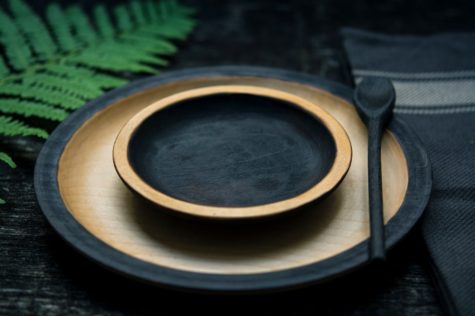
Fasting refers to complete abstinence from food for a short or long period for a specific purpose. The word is derived from the old English, ‘feastan’ which means to fast, observe, be strict. Fasting is nature’s oldest, most effective and yet least expensive method of treating disease. It is recognized as the cornerstone of natural healing. Dr. Arnold Eheret, the originator of the mucus-less diet healing system, describes it as ” nature’s only universal and omnipotent remedy of healing” and “nature’s only fundamental law of all healing and curing. ”
The practice of fasting is one of the most ancient customs. It is followed in almost every religion. The Mohammedan, the Buddhists, the Hindus and many others have their periods of strict fasting. The saints of medieval times laid great stress on this method.
Fasting in disease was advocated by the school of natural philosopher, Asclepiades, more than two thousand years ago. Throughout medical history, it has been regarded as one of the most dependable curative methods. Hippocrates, Galen, Paracelsus and many other great authorities on medicine prescribed it. Many noted modern physicians have successfully employed this system of healing in the treatment of numerous diseases.
The common cause of all diseases is the accumulation of waste and poisonous matter in the body which results from overeating. The majority of persons eat too much and follow sedentary occupations which do not permit sufficient and proper exercise for utilization of this large quantity of food. This surplus overburdens the digestive and assimilative organs and clogs up the system with impurities or poisons. Digestion and elimination become slow and the functional activity of the whole system gets deranged.
The onset of disease is merely the process of ridding the system of these impurities. Every disease can be healed by only one remedy – by doing just the opposite of what causes it, that is, by reducing the food intake or fasting.
By depriving the body of food for a time ,the organs of elimination such as the bowels, kidneys, skin and lungs are given opportunity to expel, unhampered, the overload of accumulated waste from the system. Thus, fasting is merely the process of purification and an effective and quick method of cure. It assists nature in her continuous effort to expel foreign matter and disease producing waste from the body, thereby correcting the faults of improper diet and wrong living. It also leads to regeneration of the blood as well as the repair and regeneration of the various tissues of the body.
Duration
The duration of the fast depends upon the age of the patient, the nature of the disease and the amount and type of drugs previously used. The duration is important, because long periods of fasting can be dangerous if undertaken without competent professional guidance. It is, therefore, advisable to undertake a series of short fasts of two to three days and gradually increase the duration of each succeeding fast by a day or so.
The period, however, should not exceed a week of total fasting at a time. This will enable the chronically sick body to gradually and slowly eliminate toxic waste matter without seriously affecting the natural functioning of the body. A correct mode of living and a balanced diet after the fast will restore vigor and vitality to the individual.
Fasting is highly beneficial in practically all kinds of stomach and intestinal disorders and in serious conditions of the kidneys and liver. It is a miracle cure for eczema and other skin diseases and offers the only hope of permanent cure in many cases. The various nervous disorders also respond favorably to this mode of treatment.
Fasting should, however, not be restored to in every illness. In cases of diabetes, advanced stages of tuberculosis, and extreme cases of neurasthenia, long fasts will be harmful. IN most cases, however , no harm will accrue to fasting patients, provided they take rest, and are under proper professional care.
Fasting – Methods
The best, safest and most effective method of fasting is juice fasting. Although the old classic form of fasting was a pure water fast, most of the leading authorities on fasting today agree that juice fasting is far superior to a water fast.
According to Dr. Rangar Berg, the world -famous authority on nutrition, “During fasting the body burns up and excretes huge amounts of accumulated wastes. We can help this cleansing process by drinking alkaline juice instead of water while fasting … Elimination of uric acid and other inorganic acids will be accelerated. And sugars in juices will strengthen the heart … juice fasting is, therefore, the best form of fasting. ”
Vitamins, minerals, enzymes and trace elements in fresh, raw vegetable and fruit juices are extremely beneficial in normalizing all the body processes. They supply essential elements for the body’s own healing activity and cell regeneration and thus speeding the recovery. All juices should be prepared from fresh fruit immediately before drinking. Canned or frozen juices should not be used.
A precautionary measure which must be observed in all cases of fasting is the complete emptying of the bowels at the beginning of the fast by enema so that the patient is not bothered by gas or decomposing matter formed from the excrement remaining in the body. Enemas should be administered at least every alternate day during the fasting period. The patient should get as much fresh air as possible and should drink plain lukewarm water when thirsty. Fresh juices may be diluted with pure water. The total liquid intake should be approximately six to eight glasses.
A lot of energy is spent during the fast in the process of eliminating accumulated poisons and toxic waste materials. It is, therefore, of utmost importance that the patients gets as much physical rest and mental relaxation as possible during the fast. In cases of fasts in which fruit juices are taken, especially when fresh grapes, oranges or grapefruit are used exclusively, the toxic wastes enter the blood -stream rapidly, resulting in an overload of toxic matter, which affects normal bodily functions. This often results in dizzy spells, followed by diarrhea and vomiting. If this physical reaction persists, it is advisable to discontinue the fast and take cooked vegetables containing adequate roughage such as spinach and beets until the body functioning returns to normal.
The overweight person finds it much easier to go without food. Loss of weight causes no fear and the patient’s attitude makes fasting almost a pleasure. The first day’s hunger pangs are perhaps the most difficult to bear. The craving for food will, however, gradually decrease as the fast progresses. Seriously sick persons have no desire for food and fasting comes naturally to them. The simplest rule is to stop eating until the appetite returns or until one feels completely well.
Only very simple exercises like short walks may be undertaken during the fast. A warm water or neutral bath may be taken during the period. Cold baths are not advisable. Sun and air baths should be taken daily. Fasting sometimes produces a state of sleeplessness which can be overcome by a warm tub bath, hot water bottles at the feet and by drinking one or two glasses of hot water.
Benefits
There are several benefit of fasting. During a long fast, the body feeds upon its reserves. Being deprived of needed nutrients, particularly of protein and fats, it will burn and digest its own tissues by the process of autolysis or self-digestion. But it will not do so indiscriminately. The body will first decompose and burn those cells and tissues which are diseased, damaged, aged or dead. The essential tissues and vital organs, the glands, the nervous system and the brain are not damaged or digested in fasting.
Here lies the secret of the effectiveness of fasting as a curative and rejuvenative method. During fasting, the building of new and healthy cells are sped up by the amino acids released from the diseased cells. The capacity of the eliminative organs, that is, lungs, liver, kidneys and the skin is greatly increased as they are relieved of the usual burden of digesting food and eliminating the resultant wastes. They are, therefore, able to quickly expel old accumulated wastes and toxins.
Fasting affords a physiological rest to the digestive, assimilative and protective organs. As a result, the digestion of food and the utilization of nutrients is greatly improved after fasting. The fast also exerts a normalizing, stabilizing and rejuvenating effect on all the vital physiological, nervous and mental functions.
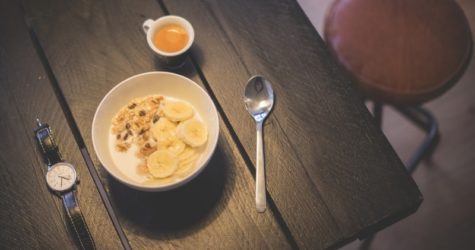
Breaking the Fast
The success of the fast depends largely on how it is broken. This is the most significant phase. The main rules for breaking the fast are: do not overeat, eat slowly and chew your food thoroughly; and take several days for the gradual change to the normal diet. If the transition to eating solid foods is carefully planned, there will be no discomfort or damage. The patient should also continue to take rest during the transition period. The right food after a fast is as important and decisive for proper results as the fast itself.
About Naturopathic Medicine
Nature Cures, not the Physician.
– Hippocrates
Principles and Practice
Natural medicine, or naturopathy, is a constructive method of treatment which aims at removing the basic cause of disease through the rational use of the elements freely available in nature. It is not only a system of healing, but also a way of life, in tune with the internal vital forces or natural elements comprising the human body. It is a complete revolution in the art and science of living.
Although the term ‘ naturopathy’ is of relatively recent origin, the philosophical basis and several of the methods of nature cure treatments are ancient. It was practiced in ancient Egypt, Greece and Rome. Hippocrates, the father of medicine ( 460-357 B.C.) strongly advocated it. India, it appears, was much further advanced in older days in natural healing system than other countries of the world. There are references in India’s ancient sacred books about the extensive use of nature’s excellent healing agents such as air, earth, water and sun. The Great Baths of the Indus Valley civilization as discovered at Mohenjodaro in old Sind testifies to the use of water for curative purposes in ancient India.
The modern methods of natural healing originated in Germany in 1822, when Vincent Priessnitz established the first hydropathic establishment there. With his great success in water cure, the idea of drugless healing spread throughout the civilized world and many medical practitioners throughout the civilized world and many medical practitioners from America and other countries became his enthusiastic students and disciples. These students subsequently enlarged and developed the various methods of natural healing in their own way. The whole mass of knowledge was later collected under one name, Naturopathy. The credit for the name Naturopathy goes to Dr. Benedict Lust ( 1872 – 1945), and hence he is called the Father of Naturopathy.
Natural medicine is based on the realization that man is born healthy and strong and that he can stay as such as living in accordance with the laws of nature. Even if born with some inherited affliction, the individual can eliminate it by putting to the best use the natural agents of healing. Fresh air, sunshine, a proper diet, exercise, scientific relaxation, constructive thinking and the right mental attitude, along with prayer and meditation all play their part in keeping a sound mind in a sound body.
Natural medicine believes that disease is an abnormal condition of the body resulting from the violation of the natural laws. Every such violation has repercussions on the human system in the shape of lowered vitality, irregularities of the blood and lymph and the accumulation of waste matter and toxins. Thus, through a faulty diet it is not the digestive system alone which is adversely affected. When toxins accumulate, other organs such as the bowels, kidneys, skin and lungs are overworked and cannot get rid of these harmful substances as quickly as they are produced.
Besides this, mental and emotional disturbances cause imbalances of the vital electric field within which cell metabolism takes place, producing toxins. When the soil of this electric filed is undisturbed, disease-causing germs can live in it without multiplying or producing toxins. It is only when it is disturbed or when the blood is polluted with toxic waste that the germs multiply and become harmful.
Basic Principles
The whole philosophy and practice of natural medicine is built on three basic principles. These principles are based on the conclusions reached from over a century of effective naturopathic treatment of diseases in Germany, America and Great Britain. They have been tested and proved over and over again by the results obtained.
The first and most basic principle of natural medicine is that all forms of disease are due to the same cause, namely, the accumulations of waste materials and bodily refuse in the system. These waste materials in the healthy individual are removed from the system through the organs of elimination. But in the diseased person, they are steadily piling up in the body through years of faulty habits of living such as wrong feeding, improper care of the body and habits contributing to enervation and nervous exhaustion such as worry, overwork and excesses of all kinds. It follows from this basic principle that the only way to cure disease is to employ methods which will enable the system to throw off these toxic accumulations. All natural treatments are actually directed towards this end.
The second basic principle of natural medicine is that all acute diseases such as fevers, colds, inflammations, digestive disturbances and skin eruptions are nothing more than self-initiated efforts on the part of the body to throw off the accumulated waste materials and that all chronic diseases such as heart disease, diabetes, rheumatism, asthma, kidney disorders, are the results of continued suppression of the acute diseases through harmful methods such as drugs, vaccines, narcotics and gland extracts.
The third principle of natural medicine is that the body contains an elaborate healing mechanism which has the power to bring about a return to normal condition of health, provided right methods are employed to enable it to do so. In other words, the power to cure disease lies within the body itself and not in the hands of the doctor.
Nature Cure vs Modern System
The modern medical system treats the symptoms and suppresses the disease but does little to ascertain the real cause. Toxic drugs which may suppress or relieve some ailments usually have harmful side-effects. Drugs usually hinder the self-healing efforts of the body and make recovery more difficult.
According to the late Sir William Osler, an eminent physician and surgeon, when drugs are used, the patient has to recover twice – once from the illness, and once from the drug. Drugs cannot cure diseases; disease continues. It is only its pattern that changes. Drugs also produce dietary deficiencies by destroying nutrients, using them up, and preventing their absorption. Moreover, the toxicity they produce occurs at a time when the body is least capable of coping with it. The power to restore health thus lies not in drugs, but in nature.
The approach of modern system is more on combative lines after the disease has set in, whereas the naturopathic system lays greater emphasis on preventive method and adopts measures to attain and maintain health and prevent disease. The modern medical system treats each disease as a separate entity, requiring specific drug for its cure, whereas the naturopathic system treats the organism as a whole and seeks to restore harmony to the whole of the patient’s being.
Methods of Naturopathy
Natural medicine aims at the readjustment of the human system from abnormal to normal conditions and functions, and adopts methods of cure which are in conformity with the constructive principles of nature. Such methods remove from the system the accumulation of toxic matter and poisons without in any way injuring the vital organs of the body. They also stimulate the organs of elimination and purification to better functioning.
To cure disease, the first and foremost requirement is to regulate the diet. To get rid of accumulated toxins and restore the equilibrium of the system, it is desirable to completely exclude acid-forming foods, including proteins, starches and fats, for a week or more and to confine the diet to fresh fruits which will disinfect the stomach and alimentary canal. If the body is overloaded with morbid matter, as in acute disease, a complete fast for a few days may be necessary for the elimination of toxins. Fruit juice may, however, be taken during a fast.
- A simple rule:
Do not eat when you are sick, stick to a light diet of fresh fruits. Wait for the return of the usual healthy appetite. Loss of appetite is Nature’s warning that no burden should be placed on the digestive organs. Alkaline foods such as raw vegetables and sprouted whole grain cereals may be added after a week of a fruits-only diet.
Another important factor in the cure of diseases by natural methods is to stimulate the vitality of the body. This can be achieved by using water in various ways and at varying temperatures in the form of packs or baths. The application of cold water, especially to the abdomen, the seat of most diseases, and to the sexual organs, through a cold sitting ( hip) bath immediately lowers body heat and stimulates the nervous system. In the form of wet packs, hydrotherapy offers a simple natural method of abating fevers and reducing pain and inflammation without any harmful side-effects. Warm water applications, on the other hand, are relaxing.
Other natural methods useful in the cure of diseases are air and sunbaths, exercise and massage. Air and sunbaths revive dead skin and help maintain it in a normal condition. Exercise, especially yogic asanas, promotes inner health and harmony and helps eliminate all tension: physical, mental and emotional. Massage tones up the nervous system and quickens blood circulation and the metabolic process.
Thus a well-balanced diet, sufficient physical exercise, the observation of the other laws of well-being such as fresh air, plenty of sunlight, pure drinking water, scrupulous cleanliness, adequate rest and right mental attitude can ensure proper health and prevent disease.
